99+ Mechanical Engineering Capstone Project Ideas

- Post author By admin
- February 13, 2024
Welcome to our helpful guide on Mechanical Engineering Capstone Project Ideas! As you reach the end of your mechanical engineering studies, you’re probably excited to start a project that shows what you’ve learned and how creative you can be.
We will explore many project ideas designed especially for mechanical engineering students like you.
In the mechanical engineering world, you can do tons of cool projects. Whether you like robots, renewable energy, planes, cars, or something else, we’ve gathered many fun ideas to get you thinking.
From designing new machines to improving existing ones, each idea is meant to challenge you and inspire you to think big
As you read through this blog, we aim to give you ideas and tips to help you start your project. Whether you’re working on a final-year assignment, trying to solve real problems, or just want to learn more about engineering, we have plenty of ideas and resources to help you.
So, let’s dive in and discover the exciting world of Mechanical Engineering Capstone Project Ideas together.
Table of Contents

List of 100 Mechanical Engineering Capstone Project Ideas
Here’s a list of 100 Mechanical Engineering Capstone Project Ideas categorized into different types:
Renewable Energy
- Solar-powered vehicle design and prototyping
- Wind turbine optimization for efficiency
- Hydroelectric power generation system development
- Biomass energy conversion technology
- Geothermal heating and cooling system design
Automotive Engineering
- Electric vehicle charging infrastructure development
- Autonomous vehicle navigation and control system
- Fuel-efficient engine design and optimization
- Vehicle aerodynamics enhancement for fuel economy
- Noise and vibration reduction in automotive systems
Aerospace Engineering
- Unmanned aerial vehicle (UAV) design and testing
- Satellite propulsion system optimization
- Aircraft wing design for improved aerodynamics
- Spacecraft thermal protection system development
- Rocket engine performance analysis and enhancement
NOTE: “ 60+ Inspiring Capstone Project Ideas for STEM Students: Unlocking Excellence “
Manufacturing and Automation
- Automated assembly line design and implementation
- Robotics for material handling and sorting
- CNC machine tool optimization for precision machining
- Additive manufacturing process optimization
- Quality control system development for manufacturing processes
Biomechanics and Medical Devices
- Prosthetic limb design and development
- Wearable health monitoring device design
- Rehabilitation robotics for physical therapy
- Biomedical imaging technology enhancement
- Orthopedic implant materials optimization
Energy Efficiency and Sustainability
- Building energy management system development
- HVAC system optimization for energy efficiency
- Energy-efficient lighting system design
- Smart grid technology for renewable energy integration
- Waste heat recovery system design and implementation
Fluid Dynamics and Heat Transfer
- Heat exchanger design and performance optimization
- Computational fluid dynamics (CFD) analysis of airflow in HVAC systems
- Fluid flow control in piping systems
- Thermal management system design for electronic devices
- Turbomachinery design and performance analysis
Materials Science and Engineering
- Composite materials development for lightweight structures
- 3D printing of advanced materials for aerospace applications
- Nanomaterials for energy storage and conversion
- Corrosion-resistant coatings development
- Biomaterials for medical implants and devices
Control Systems and Robotics
- Autonomous underwater vehicle (AUV) navigation and control
- Swarm robotics for cooperative tasks
- Control system design for industrial automation
- Robotic exoskeleton for rehabilitation and assistance
- Adaptive control algorithms for dynamic systems
NOTE: “ 90+ Inspiring Capstone Project Ideas For Civil Engineering: Building Dreams “
Structural Engineering
- Seismic retrofitting of existing structures
- Structural health monitoring system development
- Lightweight structural materials for transportation applications
- Bridge design and analysis for resilience and sustainability
- Finite element analysis (FEA) of complex structures
Environmental Engineering
- Water purification system design and optimization
- Air pollution control technology development
- Waste management and recycling process optimization
- Green building design and certification
- Sustainable urban infrastructure planning and design
Fluid Power Systems
- Hydraulic system design for heavy machinery
- Pneumatic actuator optimization for automation applications
- Fluid power energy recovery systems
- Electrohydraulic servo systems for precise control
- Fluid power system fault diagnosis and troubleshooting
Thermal Systems Engineering
- Solar thermal energy storage system design
- Combined heat and power (CHP) system optimization
- Thermal energy storage materials for renewable energy applications
- Refrigeration system design for cold chain logistics
- Waste heat utilization in industrial processes
Instrumentation and Measurement
- Sensor development for environmental monitoring
- Instrumentation system design for aerospace testing
- Non-destructive testing (NDT) techniques for materials inspection
- Data acquisition and analysis system for performance testing
- Calibration system development for precision instruments
Machine Design and Analysis
- Gearbox design and optimization for efficiency and reliability
- Bearing system analysis and improvement for rotating machinery
- Linkage mechanism design for robotic applications
- Vibration analysis and mitigation in mechanical systems
- Kinematic analysis of complex mechanical assemblies
Electromechanical Systems
- Electromagnetic energy harvesting device development
- Electric motor design and optimization
- Piezoelectric energy harvesting system for renewable energy
- Electromechanical actuator design for aerospace applications
- Electromechanical braking system for automotive safety
Human Factors Engineering
- Ergonomic design of workplace environments
- Human-robot interaction studies for collaborative robotics
- User interface design for medical devices and equipment
- Safety system design for hazardous environments
- Cognitive workload analysis in complex human-machine systems
Transportation Engineering
- Traffic flow simulation and optimization for urban planning
- Intelligent transportation systems (ITS) for traffic management
- Railway track design and maintenance optimization
- Air traffic management system optimization
- Autonomous cargo delivery system design for logistics
Robotics and Automation Systems
- Robotic manipulator design and control for industrial applications
- Autonomous agricultural robot for precision farming
- Swarm robotics for search and rescue missions
- Soft robotics for delicate object manipulation
- Humanoid robot design for human-robot interaction studies
Renewable Energy Systems
- Wave energy converter design and testing
- Tidal turbine optimization for marine energy extraction
- Biomass gasification system for renewable power generation
- Solar tracking system design for maximum energy capture
- Hybrid renewable energy system integration for off-grid applications
These project ideas include many different topics and uses in mechanical engineering. They give students many chances to explore and develop new ideas for their capstone projects.
Why Choose a Good Capstone Project Idea?
Choosing a good capstone project idea is crucial for several reasons.
Real-world relevance
A good capstone project idea allows students to work on real-world problems or challenges faced by industries or communities. This experience helps bridge the gap between academic knowledge and practical application, preparing students for future careers.
Skill enhancement
Engaging in a meaningful project allows students to apply and enhance the knowledge and skills they acquire throughout their academic journey. It will enable them to gain hands-on experience in problem-solving, critical thinking, project management, and teamwork.
Career Preparation
A well-chosen capstone project can significantly enhance a student’s portfolio and resume. Completing a project demonstrating practical skills and innovative thinking can impress potential employers and give students a competitive edge in the job market.
Personal interest and motivation
Students are more likely to be motivated and engaged When they work on a project that aligns with their interests and passions. This intrinsic motivation often leads to higher-quality work and a more fulfilling learning experience.
Networking opportunities
Capstone projects often mean working with people from companies, mentors, or classmates. Doing a project that matters gives students chances to make connections with others. These connections can help them in their future jobs.
In summary, choosing a good capstone project idea is essential because it provides students real-world experience, enhances their skills, prepares them for their careers, keeps them motivated, and offers networking opportunities.
Things to Think About When Choosing a Capstone Project Idea
Several factors should be considered when choosing a capstone project idea to ensure its success and effectiveness.
Personal Interest
Choose a project that you like and care about. Working on something you’re genuinely interested in will keep you excited and focused during the project.
Feasibility
Consider whether you can do the project considering time, what you need, and what you already know. Pick a project you can complete within your school’s requirements and time.
Evaluate the potential impact of the project. Aim to work on projects that have the potential to make a meaningful contribution to your field of study, industry, or community.
Resources Available
Assess available resources, including equipment, facilities, mentorship, and funding. Choose a project that can be effectively supported with the available resources.
Alignment with Career Goals
Think about how the project fits with what you want to achieve. Pick a project that helps you learn useful things for the job you want later on.
Interdisciplinary Opportunities
Explore opportunities for interdisciplinary collaboration. Consider projects integrating knowledge and skills from multiple disciplines, providing a broader and more holistic learning experience .
Support and Mentorship
Seek out projects that offer support and mentorship from faculty members, industry professionals, or other experts. Having guidance throughout the project can help you navigate challenges and achieve success.
Innovation and Creativity
Look for projects that encourage innovation and creativity. Choose ideas that allow you to explore new concepts, technologies, or approaches within your field.
By considering these factors when choosing a capstone project idea, you can select a personally rewarding and academically valuable project.
Final Thoughts
Lastly, selecting a mechanical engineering capstone project idea is pivotal for a student’s academic and professional growth. A well-chosen project provides a platform to apply theoretical knowledge and fosters critical problem-solving, innovation, and collaboration skills.
By carefully considering factors like personal interest, feasibility, and potential impact, students can embark on projects that align with their career aspirations and contribute meaningfully to their field.
Students can unleash their creativity and make significant strides in mechanical engineering through dedication, perseverance, and guidance from mentors.
As students delve into their capstone projects, they are urged to embrace the challenges, seek mentors’ support, and effectively leverage available resources.
This journey marks a pivotal moment in their academic journey, preparing them to transition into the workforce as competent, innovative professionals ready to tackle tomorrow’s engineering challenges.
What is a capstone project in mechanical engineering?
A capstone project in mechanical engineering is a culminating academic experience where students work on a significant project that integrates their knowledge and skills acquired throughout their degree program. It typically involves solving real-world engineering problems or developing innovative solutions.
Why are capstone projects important in mechanical engineering?
Capstone projects matter in mechanical engineering because they let students use what they’ve learned in real-life situations. They also help students learn important skills like solving problems, thinking critically, managing projects, and working in teams, which are useful for future jobs.
How do I choose a good capstone project idea?
When choosing a capstone project idea, consider factors such as your interests, feasibility, potential impact, alignment with career goals, available resources, and opportunities for interdisciplinary collaboration. Select a realistic, achievable project that allows you to develop skills relevant to your desired career path.
What are some examples of mechanical engineering capstone project ideas?
Examples of mechanical engineering capstone project ideas include designing and fabricating an autonomous vehicle, developing a renewable energy system, optimizing manufacturing processes, designing a prosthetic limb, and simulating fluid dynamics in a turbocharged engine.
- Tags Capstone project ideas , mechanical engineering , project ideas
- australia (2)
- duolingo (13)
- Education (276)
- General (75)
- How To (16)
- IELTS (127)
- Latest Updates (162)
- Malta Visa (6)
- Permanent residency (1)
- Programming (31)
- Scholarship (1)
- Sponsored (4)
- Study Abroad (187)
- Technology (12)
- work permit (8)
Recent Posts
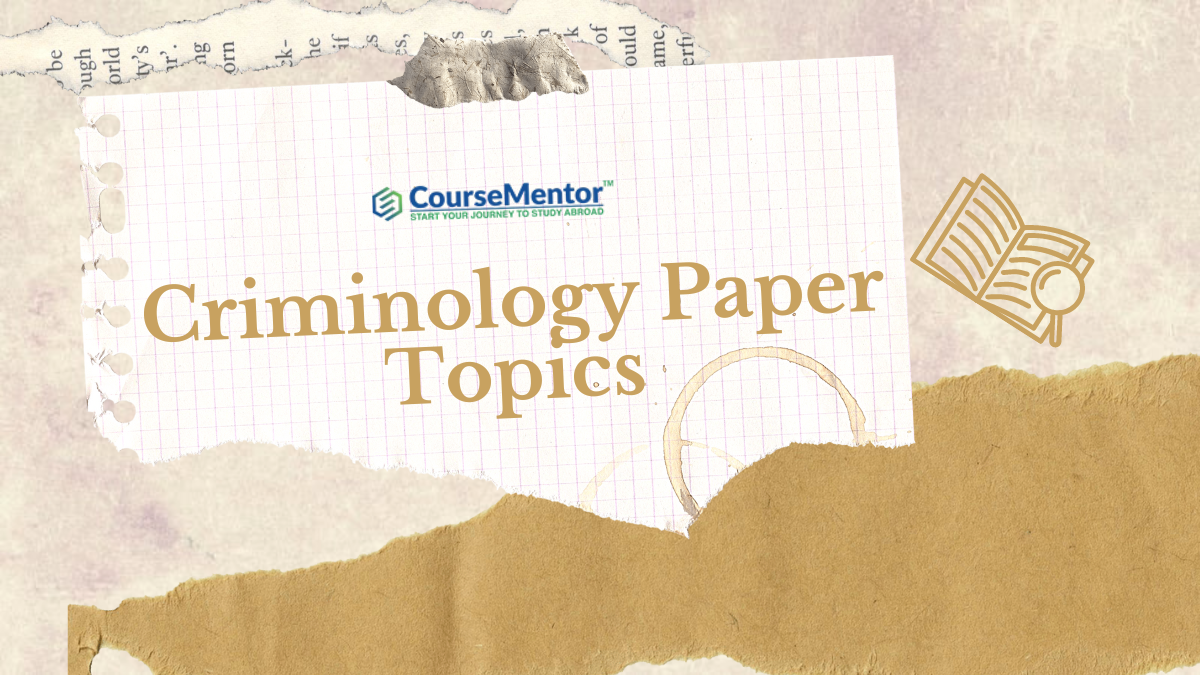

Top 151+ Mechanical Engineering Capstone Project Ideas
Welcome to our guide on Mechanical Engineering Capstone Project Ideas! You’re in the right place if you’re a mechanical engineering student preparing for your last project. Capstone projects are a big deal in your school journey.
They are your chance to show all the skills and knowledge you’ve learned throughout your studies. This blog will help you select the ideal final project idea. We’ll discuss why picking an interesting, possible, and impactful project is important.
Whether you’re interested in renewable energy, robots, sustainable transportation, biomechanics, or advanced materials, we’ve covered you with different project ideas to get your creativity going. So, let’s dive in and explore some exciting possibilities for your mechanical engineering capstone project!
Why is Choosing a Good Capstone Project Ideas Important?
Table of Contents
Here are a few key reasons why choosing a good capstone project idea is important:
- Lets you apply what you’ve learned. The capstone project allows you to use all the skills and knowledge you’ve gained in your program.
- Builds expertise. By diving deep into a topic, you can become an expert on something that interests you.
- Shows your skills. A great capstone project highlights your abilities to potential employers.
- Expand your network. Capstone projects often involve working with external organizations or communities.
- Drives personal growth. An in-depth project helps build planning, critical thinking, and problem-solving skills.
- Creates a sense of accomplishment. The capstone is a major milestone that shows you’ve achieved your degree.
- Select a topic you’re passionate about. This provides motivation and a satisfying finish to your academic journey.
In short, choosing a capstone project that excites you allows you to fully demonstrate your new skills and abilities while preparing for your future career.
What Are The Factors To Consider When Choosing A Capstone Project?
Here are some simple tips on choosing your capstone engineering project:
Pick a Topic You’re Passionate About
Choose something you find interesting! You’ll enjoy the project more and stay motivated.
Make Sure It’s Feasible
Don’t pick ideas that are too complex or expensive. Ensure you have the skills, time, and resources to complete it.
Aim for Real-World Impact
Pick a project that solves a real problem or improves lives. This will make your work more meaningful.
Talk to Your Professor
Ask for their advice on project ideas that fit the course requirements. Their guidance is invaluable.
Start Brainstorming Early
Give yourself plenty of time to develop creative ideas and research. Don’t leave it to the last minute.
Be Original
Avoid picking the same projects as others. Come up with fresh, innovative ideas to stand out.
Stay Organized
Make deadlines and track progress. Good time management is key to finishing successfully.
Hope these simple tips help you choose an awesome final project! Let me know if you need any other advice.
151+ Mechanical Engineering Capstone Project Ideas
Here’s a list of 151+ mechanical engineering capstone project ideas for students:
- Design and prototype a low-cost, portable water purification system.
- Develop a smart irrigation system using IoT sensors and actuators.
- Design a solar-powered refrigerator for off-grid communities.
- Create a drone-based package delivery system for urban areas.
- Develop an automated vertical farming system for urban agriculture.
- Design a low-cost prosthetic limb with adjustable settings for different activities.
- Develop a wearable device for monitoring and improving posture.
- Design and build a small-scale wind turbine for residential use.
- Develop a bicycle-sharing system with integrated GPS tracking and locking mechanisms.
- Design a compact, energy-efficient home heating system using renewable energy sources.
- Create a robotic exoskeleton to assist with lifting heavy objects.
- Design a pneumatic-powered wheelchair for off-road use.
- Develop a smart helmet for motorcyclists with built-in communication and safety features.
- Design an autonomous vehicle for agricultural tasks such as planting and harvesting.
- Create a modular construction system for building temporary shelters in disaster areas.
- Develop a noise-canceling system for reducing cabin noise in airplanes.
- Design a self-balancing electric scooter for urban commuting.
- Create a smart home energy management system for optimizing energy usage.
- Develop a device for extracting water from air humidity in arid regions.
- Design a low-cost, portable ultrasound machine for medical diagnostics in rural areas.
- Create a solar-powered desalination system for producing drinking water from seawater.
- Develop a low-cost, energy-efficient cooking stove for use in developing countries.
- Design a waste-to-energy conversion system for small-scale applications.
- Create a modular, expandable furniture system for small apartments.
- Develop a wearable device for monitoring vital signs and alerting emergency services in case of medical emergencies.
- Design a low-cost, portable electrocardiogram (ECG) machine for remote healthcare monitoring.
- Develop a smart traffic management system for optimizing traffic flow in cities.
- Create a low-cost, portable water filtration system for disaster relief operations.
- Design an automated system for sorting and recycling household waste.
- Develop a wearable device for monitoring and improving sleep quality.
- Design a low-cost, scalable wind energy harvesting system for rural electrification.
- Create a device for detecting and alerting air pollution levels in real time.
- Develop a smart irrigation system for precision agriculture.
- Design a compact, portable power generator for camping and outdoor activities.
- Create a device for monitoring and reducing energy consumption in households.
- Develop a robotic system for inspecting and maintaining bridges and pipelines.
- Design a low-cost, portable medical imaging device for use in remote areas.
- Create a device for monitoring and improving indoor air quality.
- Develop a smart home automation system for elderly care and assistance.
- Design a low-cost, portable device for diagnosing infectious diseases in resource-limited settings.
- Create a system for converting food waste into biogas for cooking.
- Develop a wearable device for monitoring and preventing workplace injuries.
- Design a compact, portable water desalination system for disaster relief.
- Create a device for monitoring and reducing water usage in households.
- Develop a robotic system for inspecting and maintaining solar panels.
- Design a low-cost, portable device for detecting water contaminants in rural areas.
- Create a system for monitoring and optimizing energy usage in commercial buildings.
- Develop a smart waste management system for optimizing garbage collection routes.
- Design a portable, self-contained medical clinic for use in remote areas.
- Create a device for monitoring and reducing energy usage in industrial settings.
- Develop a system for converting agricultural waste into biochar for soil improvement.
- Design a low-cost, portable device for diagnosing respiratory diseases in children.
- Create a device for monitoring and reducing fuel consumption in vehicles.
- Develop a robotic system for cleaning and maintaining solar panels.
- Design a compact, portable device for detecting lead contamination in water.
- Create a system for monitoring and optimizing energy usage in data centers.
- Develop a smart lighting system for reducing energy consumption in buildings.
- Design a low-cost, portable device for detecting pesticide residues in food.
- Create a device for monitoring and reducing water usage in agriculture.
- Develop a system for converting organic waste into biogas for cooking.
- Design a compact, portable device for diagnosing malaria in remote areas.
- Create a device for monitoring and reducing energy usage in schools.
- Develop a robotic system for inspecting and maintaining wind turbines.
- Design a low-cost, portable device for testing soil fertility in agriculture.
- Create a system for monitoring and optimizing energy usage in hospitals.
- Develop a smart transportation system for optimizing public transit routes.
- Design a compact, portable device for detecting heavy metal contamination in water.
- Create a device for monitoring and reducing energy usage in office buildings.
- Develop a robotic system for harvesting fruits and vegetables in agriculture.
- Design a low-cost, portable device for diagnosing diabetes in rural areas.
- Create a system for monitoring and optimizing energy usage in hotels.
- Develop a smart waste sorting system for recycling facilities.
- Design a compact, portable device for testing water quality in rivers and lakes.
- Create a device for monitoring and reducing energy usage in retail stores.
- Develop a robotic system for sorting and recycling plastic waste.
- Design a low-cost, portable device for diagnosing tuberculosis in developing countries.
- Create a system for monitoring and optimizing energy usage in airports.
- Develop a smart parking system for optimizing parking space usage in cities.
- Design a compact, portable device for detecting air pollution levels in urban areas.
- Create a device for monitoring and reducing energy usage in warehouses.
- Develop a robotic system for sorting and recycling paper waste.
- Design a low-cost, portable device for diagnosing HIV/AIDS in resource-limited settings.
- Create a system for monitoring and optimizing energy usage in shopping malls.
- Develop a smart traffic signal system for reducing congestion in cities.
- Design a compact, portable device for testing water quality in wells.
- Create a device for monitoring and reducing energy usage in stadiums.
- Develop a robotic system for sorting and recycling glass waste.
- Design a low-cost, portable device for diagnosing malaria in children.
- Create a system for monitoring and optimizing energy usage in universities.
- Develop a smart lighting system for reducing light pollution in urban areas.
- Design a compact, portable device for testing air quality in indoor environments.
- Create a device for monitoring and reducing energy usage in museums.
- Develop a robotic system for sorting and recycling electronic waste.
- Design a low-cost, portable device for diagnosing dengue fever in tropical regions.
- Create a system for monitoring and optimizing energy usage in theaters.
- Develop a smart transportation system for optimizing school bus routes.
- Design a compact, portable device for testing soil moisture in agriculture.
- Create a device for monitoring and reducing energy usage in gyms.
- Develop a robotic system for sorting and recycling metal waste.
- Design a low-cost, portable device for diagnosing cholera in emergencies.
- Develop a smart navigation system for visually impaired individuals.
- Design a compact, portable device for testing water acidity in aquaculture.
- Create a device for monitoring and reducing energy usage in libraries.
- Develop a robotic system for sorting and recycling textile waste.
- Design a low-cost, portable device for diagnosing the Zika virus in affected regions.
- Create a system for monitoring and optimizing energy usage in restaurants.
- Develop a smart transportation system for optimizing delivery routes.
- Design a compact, portable device for testing water turbidity in rivers.
- Create a device for monitoring and reducing energy usage in concert halls.
- Develop a robotic system for sorting and recycling plastic bottles.
- Design a low-cost, portable device for diagnosing hepatitis in remote areas.
- Create a system for monitoring and optimizing energy usage in stadiums.
- Develop a smart traffic signal system for reducing congestion in parking lots.
- Design a compact, portable device for testing water hardness in wells.
- Create a device for monitoring and reducing energy usage in convention centers.
- Develop a robotic system for sorting and recycling food waste.
- Design a low-cost, portable device for diagnosing typhoid fever in developing countries.
- Create a system for monitoring and optimizing energy usage in sports arenas.
- Develop a smart transportation system for optimizing taxi routes.
- Design a compact, portable device for testing water salinity in coastal areas.
- Create a device for monitoring and reducing energy usage in theme parks.
- Develop a robotic system for sorting and recycling construction waste.
- Design a low-cost, portable device for diagnosing yellow fever in affected regions.
- Create a system for monitoring and optimizing energy usage in cinemas.
- Develop a smart traffic signal system for reducing congestion at intersections.
- Design a compact, portable device for testing water conductivity in rivers.
- Create a device for monitoring and reducing energy usage in casinos.
- Develop a robotic system for sorting and recycling organic waste.
- Design a low-cost, portable device for diagnosing rabies in rural areas.
- Create a system for monitoring and optimizing energy usage in amusement parks.
- Develop a smart transportation system for optimizing ride-sharing routes.
- Design a compact, portable device for testing water temperature in lakes.
- Create a device for monitoring and reducing energy usage in zoos.
- Develop a robotic system for sorting and recycling medical waste.
- Design a low-cost, portable device for diagnosing bird flu in poultry farms.
- Create a system for monitoring and optimizing energy usage in aquariums.
- Develop a smart traffic signal system for reducing congestion on highways.
- Design a compact, portable device for testing water oxygen levels in rivers.
- Create a device for monitoring and reducing energy usage in botanical gardens.
- Develop a robotic system for sorting and recycling hazardous waste .
- Design a low-cost, portable device for diagnosing swine flu in pig farms.
- Create a system for monitoring and optimizing energy usage in theme parks.
- Develop a smart transportation system for optimizing bus routes.
- Design a compact, portable device for testing water nitrate levels in lakes.
- Create a device for monitoring and reducing energy usage in ski resorts.
- Develop a robotic system for sorting and recycling automotive waste.
- Design a low-cost, portable device for diagnosing mad cow disease in cattle farms.
- Create a system for monitoring and optimizing energy usage in botanical gardens.
- Develop a smart traffic signal system for reducing congestion in school zones.
- Design a compact, portable device for testing water phosphate levels in rivers.
- Create a device for monitoring and reducing energy usage in wildlife reserves.
- Develop a robotic system for sorting and recycling household hazardous waste.
- Design a low-cost, portable device for diagnosing avian influenza in poultry farms.
- Create a system for monitoring and optimizing energy usage in wildlife reserves.
- Develop a smart transportation system for optimizing shuttle routes.
These Mechanical Engineering Capstone project ideas cover various topics and can be tailored to fit multiple levels of complexity and resources available to students. Students can choose a project based on their interests and available resources.
Tips For Success In Capstone Project Execution
Here are some easy tips for success with your engineering final project:
- Start early – Don’t wait until the last minute. Give yourself plenty of time.
- Break it down – Break the project into smaller tasks and set deadlines. This makes it less overwhelming.
- Ask for help – Talk to your professor if you get stuck. Bounce ideas off classmates.
- Research thoroughly – Learn everything you can about your topic. Understanding it is key.
- Record as you go – Take detailed notes and photos. Document the whole process.
- Test, test, test – Test continuously as you develop your project. Fix issues as they come up.
- Stay organized – Use checklists and notebooks to stay on track. Clutter causes chaos.
- Relax – Take study breaks and get good sleep. Don’t let stress sabotage your success.
- Practice presenting – Prepare and rehearse what you’ll say for project presentations.
- Proofread – Double-check your paper and slides for any errors before turning them in.
- Enjoy the process – Have fun bringing your ideas to life! The learning experience is invaluable.
Final Remarks
Congratulations on finishing our Mechanical Engineering capstone project ideas guide! This blog has helped give you ideas to find the perfect project for your final endeavor. Remember, your capstone project isn’t just a requirement to graduate – it’s a chance to make a real impact in mechanical engineering.
Whether you choose one of our ideas or come up with your own, welcome the challenge and enjoy the journey. As you start on your final project, remember the skills you’ve learned, ask your professors and industry professionals for guidance, and manage your time well.
Your hard work and dedication will pay off as you show your abilities and contribute to the exciting world of mechanical engineering. Best of luck with your final project, and may it be the start of many more successes in your engineering career!
Similar Articles

How To Do Homework Fast – 11 Tips To Do Homework Fast
Homework is one of the most important parts that have to be done by students. It has been around for…

How to Write an Assignment Introduction – 6 Best Tips
In essence, the writing tasks in academic tenure students are an integral part of any curriculum. Whether in high school,…
Leave a Comment Cancel Reply
Your email address will not be published. Required fields are marked *
This site uses Akismet to reduce spam. Learn how your comment data is processed .
Current students
Senior design projects.
Project topics Design process Capstone expo Sponsor a project Industry Capstone Program
Senior design projects (also known as "capstone" projects) are the centerpiece of the ME curriculum's professional component, allowing students to be involved in interesting, real-world activities. Each senior is required to complete this course. Capstone projects are each advised by a full-time tenured or tenure-track faculty member who works with the teams.
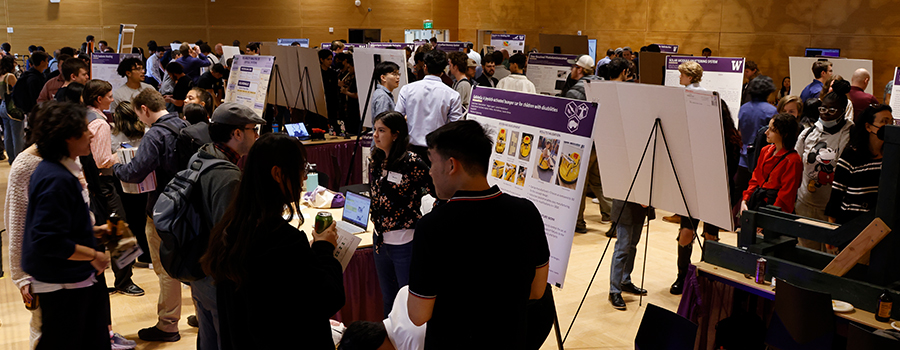
For more detailed information, please visit ME Undergraduate Advising Canvas: Capstone Page .
Without exception, all ME 495 projects must be team efforts. Teams must consist of between three and five students.
Project topics
Students can pursue their varied technical and professional interests through a selection of projects that include:
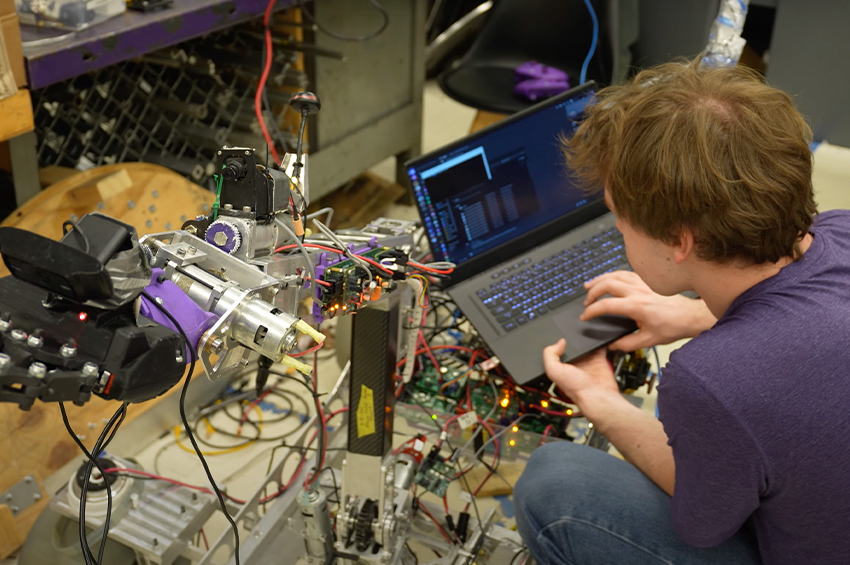
Student club-based
- Human Powered Submarine
- Husky Robotics
- Formula Motorsports
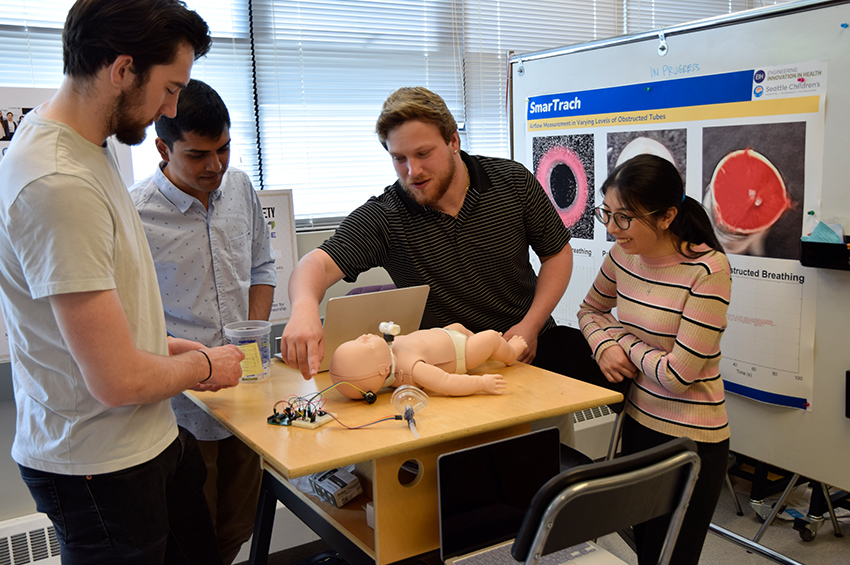
- Mechatronics
- Engineering Innovation in Health
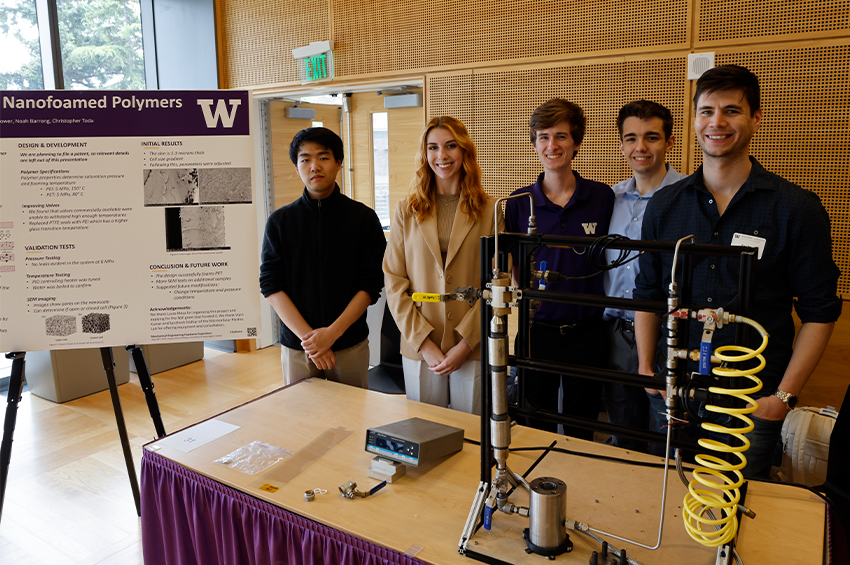
- Industry-sponsored projects
- Student-inspired projects
- Faculty-guided projects
Design process
Capstone design projects allow students to experience the rigor and structure of a full-cycle design, including:
Problem definition
benchmark studies, concept generation and feasibility study, engineering design analyses, prototype fabrication and testing.
Through the capstone courses, students learn to fully define a design problem. This includes not only a statement of the project deliverables and objectives in the layman's or client's terms, but also a full definition of the agreed upon functional requirements and constraints (quantified). In the case of the competition-based projects, the problem definition is based on the detailed rules and guidelines of the competition.
All of the capstone projects draw upon at least several fundamental engineering science areas and involve significant quantitative analysis often in the form of numerical simulation, typically preceded by approximate analytical solutions. Industry-inspired projects are carefully selected on the basis of the required fundamental engineering science areas and also to align with the core expertise of the faculty adviser.
All projects must include a written report. Although the form of the report may vary according to the nature and requirements of the individual project, all final reports must contain the following (or equivalent) sections:
- Risk and liability
- Ethical issues
- Impact on society
- Impact on the environment
- Cost and engineering economics
Capstone expo
At the end of each academic year, ME undergraduates showcase their capstone design projects through posters, prototypes, exhibits and demos at an annual capstone expo.
Sponsor a project
- For health-related projects, contact Kat Steele , Albert S. Kobayashi Endowed Professor
- For all other types of projects, contact Jill Kaatz , CoE Industry Capstone Program Director
Industry Capstone Program
The Industry Capstone Program brings together UW students and professionals to tackle real-world, interdisciplinary engineering problems. Sponsors bring in projects from their organizations and provide support to teams of creative, talented engineering students who will design and build innovative solutions.
View capstone projects
- Directories
- Degrees & Programs
- Admission & Aid
- Academic & Career Advising
- Student Life
- Mechanical and Materials Engineering
- Department Home
- Materials Science and Engineering (B.S.)
- Mechanical Engineering (B.S.)
- Materials Science and Engineering (Minor)
- Renewable and Clean Energy (Minor)
- Combined Undergraduate and Graduate Degrees
- Aerospace Systems Engineering (M.S.)
- Materials Science and Engineering (M.S.)
- Mechanical Engineering (M.S.)
- Renewable and Clean Energy (M.S.)
- Materials Science and Engineering
- Mechanical and Aerospace Engineering
- Research Areas and Faculty
Capstone Design Projects
- American Society of Mechanical Engineers
- Course Descriptions
- Curricular Advising Policies
- Faculty and Staff Directory
- Department News
All mechanical and materials engineering students are required to complete a capstone project in their senior year. Below you will find a list of past capstone projects from our engineering students.
2023 Fall Semester Projects
- Rapid Solidification Machine (PDF) Team Members: Anthony Carver, Jesse Potts, Landon Tuck, Courtney Wuilleumier
- Design and Development of an Extrusion-Based 2.5D/3D Printer for Electronic Packaging (PDF) Team Members: Alex Adams, Dylan Hall, Jacob Harrison, Jeet Patel
- Development of a Grease Lubrication Mechanism for a Two-Disk Contact Set-Up (PDF) Team Members: Devin Blankenship, Braden Russell, Kevin Kemp, Austin Sherwood, Alex Plas
- Green Automated Aquaponics System (PDF) Team Members: Intissar Elhani, Alan Whiting, Kevin Grubb, Evan Gehret
- CFD Modeling of Formula 600 Race Car (PDF) Team Members: Sean Barber, Ethan Cornell, Bailey Hoelscher, Tamal Kambarov, Viswanathan Ramesh
- Low Head Ocean Energy Storage (PDF) Team Members: Adam Hume, Cameron Floyd, Carson Estep, Dustin Leonard, Samuel Boys
2023 Spring Semester Projects
- Convertible Home Gym Apparatus (PDF) Team Members: Connor Schock, Noah Bledsoe, Jackson Nix
- Battlefield Model Design (PDF) Team Members: Hameed Juma, Jeff Denton, Lemuel Duncan, Zach Baker
- Metal Air Batteries for EVs and Electronic Devices (PDF) Team Members: Alexis Burt, Logan Nielsen, Ian Thompson
- Wave Power Conversion (PDF) Team Members: Luke Banks, Bryce Ullman, Emma Vuckovich
- SAE Baja Collegiate Design Series (PDF) Team Members: Clay Minor, Logan Rowland, Elliot Wiggins, Julia Sentman, Dominic Manns, Stephanie Gangl
- Hybrid UAV Power System (PDF) Team Members: Lucas Duncan, Riley Hall, Abigail Kerestes, James Schmitz
- Optimization of Joining Methods for Generator Converter Chassis (PDF) Team Members: Tyriek Craigs, Seth Perkins, Robert Hall, Jacob Evans
- Optimization of Temperature Gradient in Magnetic Inductors (PDF) Team Members: Kyle Schroder, Alan Hingsbergen, Blake Martin, Jordan Stanley
- Optimized Wire Coiler for GE Aviation (PDF) Team Members: Connor Allen, Bradley Jones, Alex Strack, Kaitlin Willi
- Solar Splash Electric Boat Competition (PDF) Team Members: Brice Prigge, Bryar Powell, Chase Mansell, Evan Hannon
- Ultralight Copper Current Collectors for Flexible Batteries (PDF) Team Members: Connor Wyckoff, Branen Bussey, Dryana Russell, Mashuj Alshammari
2022 Fall Semester Projects
- Modular Vibration Testing Kit for Vibrations Lab Course (PDF) Team Members: Michael Ahlers, Seth Madison Tyler Motzko
- Design of Complex Fluid Electrical Conductivity Cell (PDF) Team Members: Bradley Cripe, Garrett Gniazdowski, Gaspard Matondo, Scott Osborne
- Structural Optimization of Quadcopter Landing Gear (PDF) Team Members: Taha Etekbali, Jilian Sollars, Katrina Knight
- Convertible Home Gym (PDF) Team Members: Max Carnevale, Randa Richards, Kevin Hall, Michael Orengo
- IDC Spring Crimping Tool (PDF) Team Members: Aleni Burcham, Samuel Sowers, Alexander Smith, and Luke Lieghley
- Ocean Wave Energy Generation (PDF) Team Members: Cameron Slater, Ben Ferree, Daniel Ploss, Austin Shurlow
Past Capstone Projects
- Micro Turbine Engine Design Competition
- Additive Manufacturing Process Design
- SAE Baja Competition
- Fluid Viscosity Measurement
- Folding UAV
- Wheel Life Prediction
- Dual-Plane Airfoil
- Resonance Wave Power
- Autonomous Aerial Remote-Sensing Drone
- Serial Grinder and Imaging System to Create 3-D Images of Vertebrate Rich Sedimentary Rock Cores
- Customizable and Low-Cost Water Quality Monitoring Platform for Grand Lake St. Marys
- Robotic Football Competition
- Wood Materials Project
- Self-Learning Targeting System
- Convertible Home Gym
- Additive Manufacturing Welding
- Programming & Optimization
- Characterizing the Performance of a UAV for a Future Hybrid Powertrain
- Configurable Bike
- Mechanical Tester for Printed Electronics
- Porous Testing Medium
- SAE Aero Design Competition
- Solar Splash Design Competition
Take the Next Step
Finding the right college means finding the right fit. See all that the College of Engineering and Computer Science has to offer by visiting campus.
Engineering and Computer Science, College of
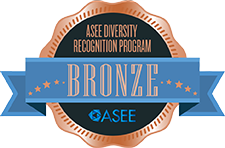
Departments and Programs
- Biomedical, Industrial, and Human Factors Engineering
- Computer Science and Engineering
- Electrical Engineering
- Ph.D. in Engineering
- Success Stories
About Wright State
- Accreditation
- National Recognition
- Quick Facts
- Academic Calendar
Information For
- Counseling and Wellness
- Disability Services
- Human Resources
- Information Technology (CaTS)
- Parking and Transportation

- Make a Gift
- Wright State Cares

- X (formerly Twitter)
- Copyright © 2024
- Accessibility
- Emergency Preparedness
- Web Support
Capstone Design Projects
Capstone Design is the culmination of the undergraduate student experience, creating a blueprint for innovation in engineering design.
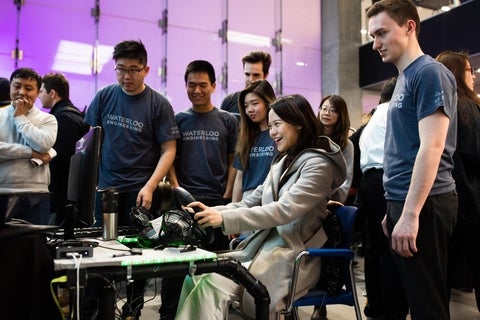
The Ohio State University
- BuckeyeLink
- Search Ohio State

Capstone Projects
Points of pride, scroll through the class of 2021's capstone projects below. click on any of the projects to view the full research poster.

- Request Information
- Find Faculty & Staff
- Info For Toggle Info Return to Menu Menu
- Search Open Search Close Search
- Message from the Chair
- Department Directory
- Undergraduate Studies
- Graduate Studies
- Co-op & Experiential Learning
- Research Themes
- Research Centers
- Faculty and Staff Directory
- Annual Reports
- Honors & Distinctions
- Faculty Authored Textbooks
- Faculty Hiring
- Student Groups
- Industrial Advisory Board
- Resources for Current Students
- Internal Department Portal
- In the Media
- Spotlight Stories
Capstone Senior Design (Capstone) is the final required course for the Bachelor’s degree; it provides the opportunity for students to integrate their curricular and experiential journeys into a multi-semester team project with a real-world outcome.
The Capstone experience applies the engineering sciences and other knowledge domains to the design of a system, component, product, process, and/or set of research inquiries. The Capstone projects reflect current, practical, and relevant industrial and mechanical engineering design projects or may involve a combination of both disciplines. Students bid for or develop their team’s particular design project with the approval of appropriate faculty. In the project assignment process, design teams are self-formed, or configured of students with similar interest areas. Each project includes the use of open-ended problems, development and application of research and design methodologies, formulation of design problem statements and specifications, generation and consideration of alternative solutions, along with safety, usability and feasibility considerations, and detailed system descriptions. It also includes realistic constraints such as economic factors, sustainability, along with global and social impact, to name a few. Throughout the Capstone experience, students are also challenged to think and act as a ‘team’ and to consider how notions of diversity, equity, inclusion, and belonging affect their decisions, actions, and results.
Capstone projects are often sponsored by outside clients, including early-stage ventures arising from NU’s Entrepreneurial Ecosystem. Sometimes, ambitious student-proposed technical ideas can (and have) become startup ventures themselves.
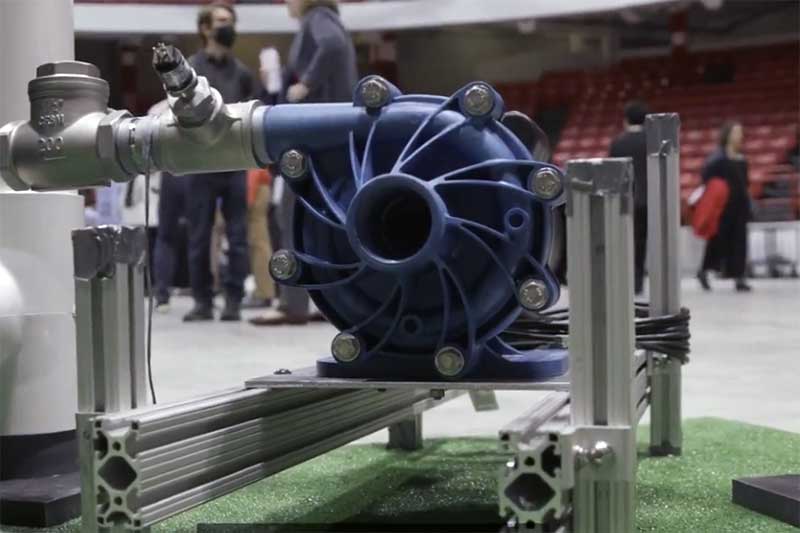
Sponsor a Project
The breadth of engineering challenges, both ME and IE, reflect the diversity of the project sponsors. Our sponsors, both corporate and non-profits, range from the aerospace industry to biomedical and regional hospitals. Department faculty sponsor projects for related to their research interests and for custom equipment for their research labs and, increasingly, students enter the program bringing their own sophisticated projects.
In many respects, our project sponsors are the life blood of the program. They bring current real world problems to the students and expect real solutions. Sponsors want to know the patent searches will be done and that intellectual property rights have been considered and protected.
The project sponsors must provide a contact person and are expected to provide timely feedback and interactions. The project should include a prototype deliverable or implemented solution. A “not for work” grant to be negotiated and expensive required items for the prototype are requested from the sponsor. Northeastern will provide computer simulation and basic machining processes. It is usually for the corporate sponsor and Capstone Design Coordinator to discuss and negotiate the details of this arrangement. Protection of the sponsor’s intellectual property is a major concern throughout this process.
At the beginning of the two semester sequence, the students self-assemble into groups and, after reviewing project descriptions, indicate their preferences. The preferences are used to assign the projects. Once projects are assigned, the students meet with their faculty advisor weekly and with representatives of the sponsor, through onsite visits, Skype or teleconferences, on a basis determined by the sponsor. The evaluation and reporting processes are tightly structured. The program culminates with a day long series of public presentations judged by a panel of our alumni.
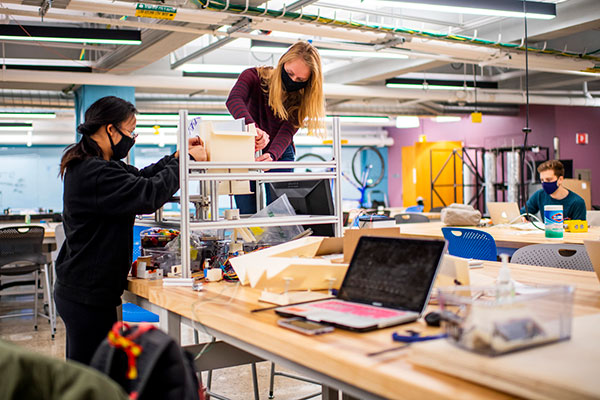
- Facts and Figures
- Accreditation
- Maps and Directions
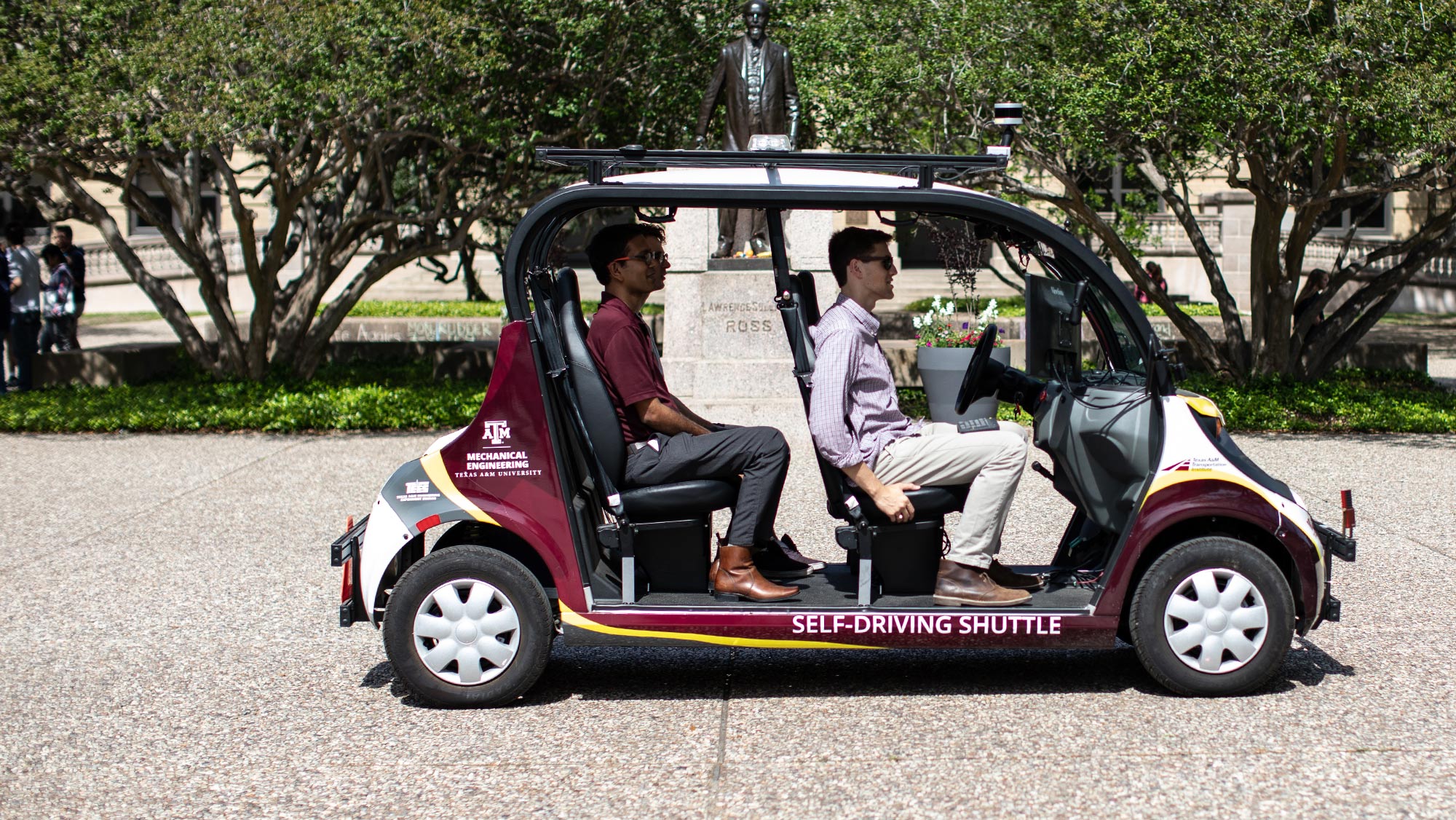
- Degree Programs
- Prospective Students
- Current Students
Senior Capstone Design
- Curriculum Details
- Global Programs
- Student Organizations
- Engineering Honors
- Fast-Track Programs
- Admissions and Aid
- Admission Guidelines
- Scholarships and Financial Aid
- Graduate Admissions
- Entry to a Major Process
- Centers and Laboratories
- Rapid Prototyping Studio
- Hazardous Chemical Waste Disposal
- Shared Services Facilities
- Instrumentation
- Department Leadership Team
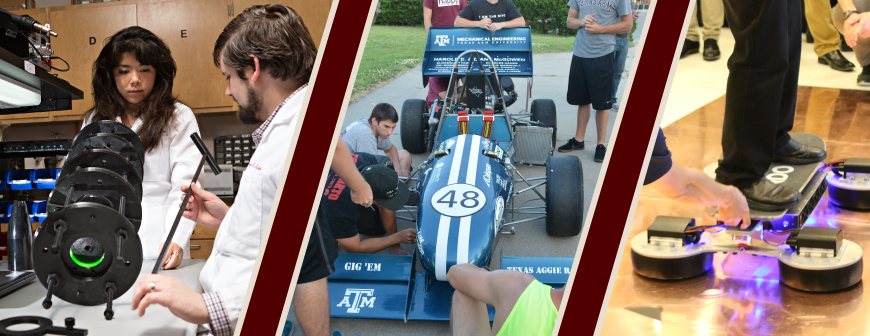
What is the Mechanical Engineering Senior Capstone Design experience?
The Senior Capstone Design experience aims to bridge the gap between classroom and industry by requiring students to use their knowledge and skills to complete an engineering design project equivalent to the assignments they will soon receive as aspiring professional engineers.
Projects are completed in groups, making it necessary for students to develop the skills needed to succeed in diverse industry design teams. Employers value graduates with capstone design experience because these students have gained broad experience by applying their extensive knowledge base to solve complex engineering problems as a team.
Seniors also make significant professional contacts through design projects with industry participants, guest lecturers and the annual Engineering Project Showcase.
Why are Senior Capstone Design Courses Important?
Courses use industry-based team projects and professional interaction to equip future engineers with important design, communication and presentation experience, and are the culmination of the Texas A&M engineering experience, as seniors apply their four years of classroom knowledge to solve realistic engineering problems.
The courses prepare our engineering students to use advanced technology to analyze and design engineering elements and systems according to industry standards.
Senior Capstone Design "Nuts and Bolts"
The Mechanical Engineering Senior Capstone Design Project Program is a two semester course sequence in which students will learn, synthesize and develop the skills of engineering practice with a lecture and studio/laboratory in each course. In the lecture portion, students learn the design process and the tools that encourage successful innovation. In the studio, the students apply what they have learned over the last several years to a real design project. Student teams are generally four to eight students, some of whom hail from other engineering disciplines, working in concert with the sponsor and a professor who coaches the team.
The projects can include exploratory studies, conceptualization, analysis and simulation, prototyping, and validation of the design solutions. Projects can be products, parts or systems. Typical results include several written reports that document the design exploration, design refinement and analysis, and prototyping process. Results also include presentations given to the sponsor and prototypes.
We are always looking for new project sponsors. Please see the sponsor page for more information about project sponsorship.
For more information contact [email protected]
For information about the Engineering Project Showcase, contact EASA .
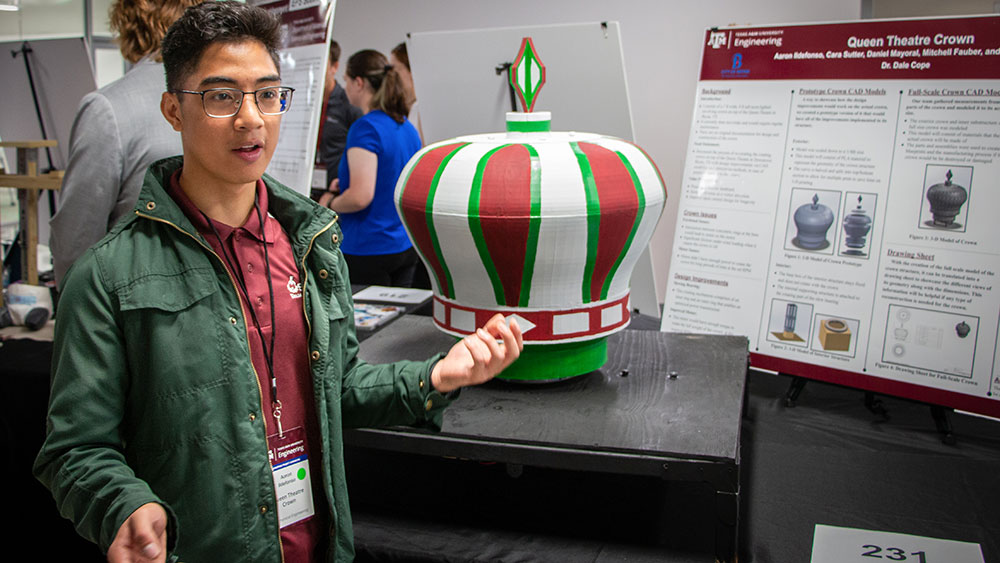
Students redesign historic theater’s crown rotation system
Mechanical engineering students from Texas A&M University discuss the history they learned and the work they did with the Queen Theatre in Bryan, Texas, during their Capstone project to upgrade a local downtown feature.

Student team designs autonomous electric vehicle charging technology
A student team used their senior capstone design project to create a scaled-down mechatronic system capable of identifying a mock electric vehicle charging port and connecting itself.
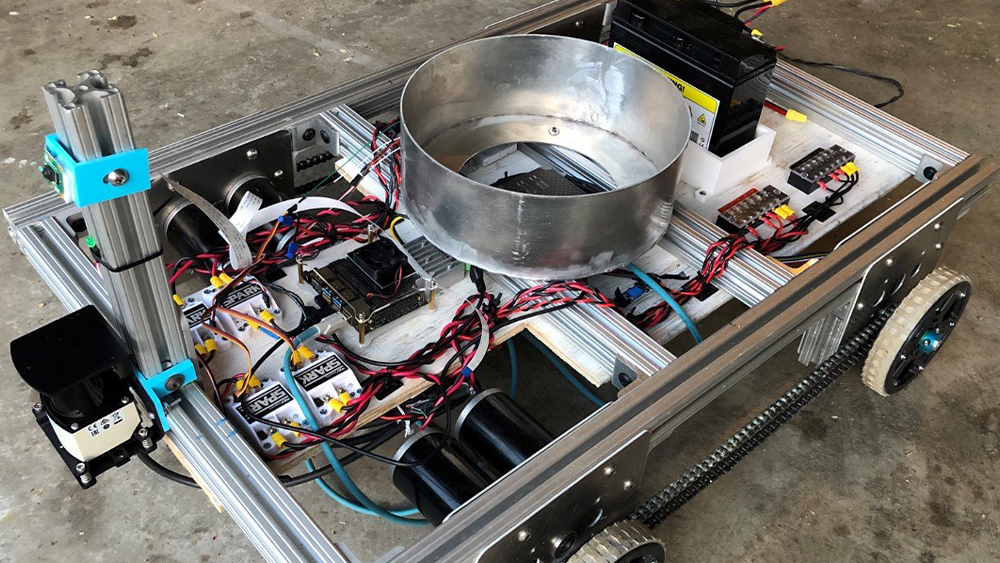
Student team wins $10,000 by developing an automated toolbox for construction workers
A team of mechanical engineering students won $10,000 for their creation, the AutoTool. The AutoTool is an automated tool storage robot designed to navigate construction sites and identify tools to help increase the productivity of construction workers.
Purdue Polytechnic Institute
Global mobile menu.
- Departments
- Statewide Locations
New projects, ideas abound at Tech Expo 2024
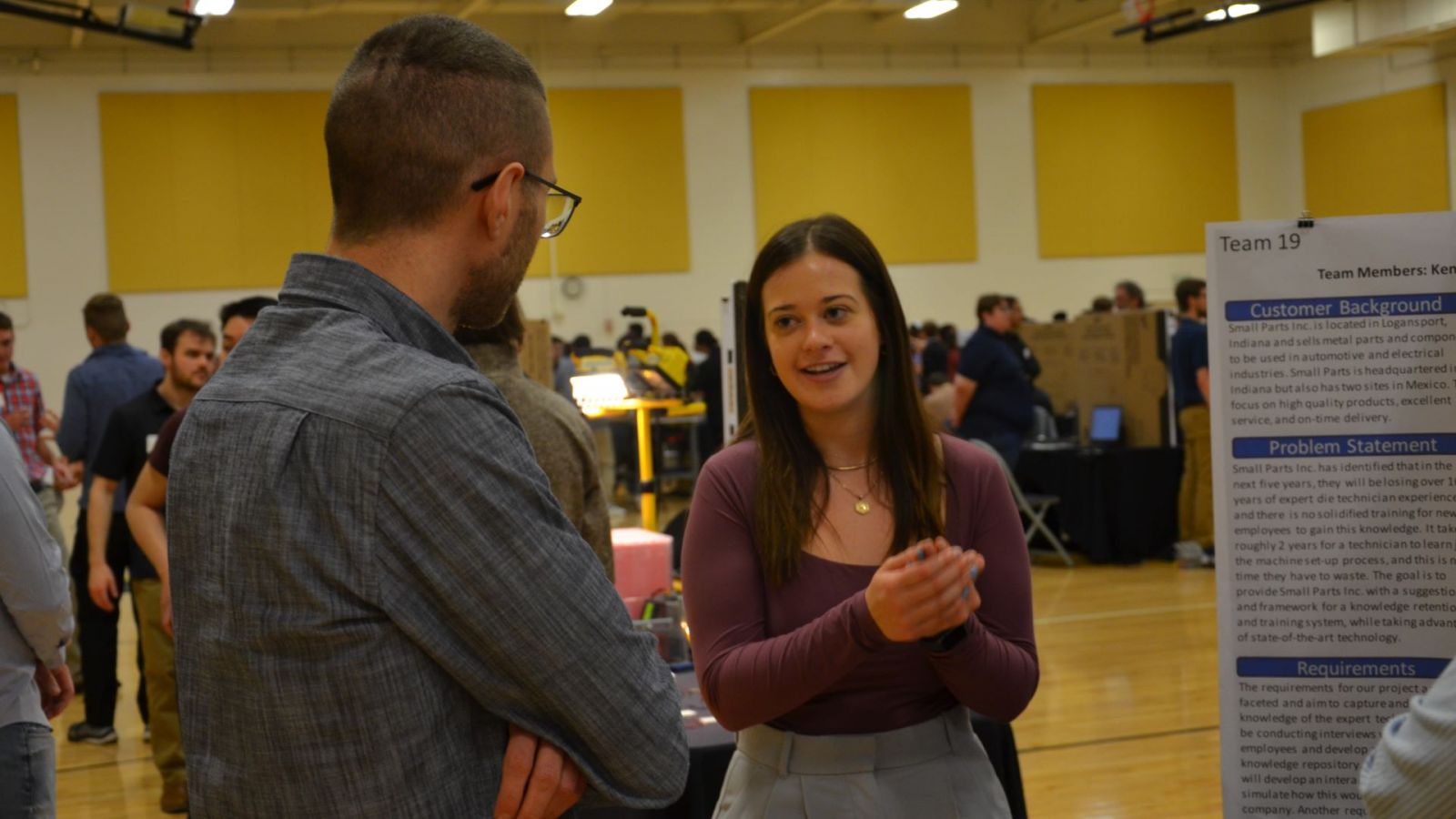
Purdue Polytechnic, the college for technology at Purdue University, recently hosted the spring 2024 Tech Expo run by the School of Engineering Technology.
Tech Expo is the final showcase for seniors in engineering technology, where they display their capstone projects—an assignment needed for graduation—with a range of projects across engineering disciplines, with goals determined by the remit of the students’ collaborators among faculty and industry sponsors.
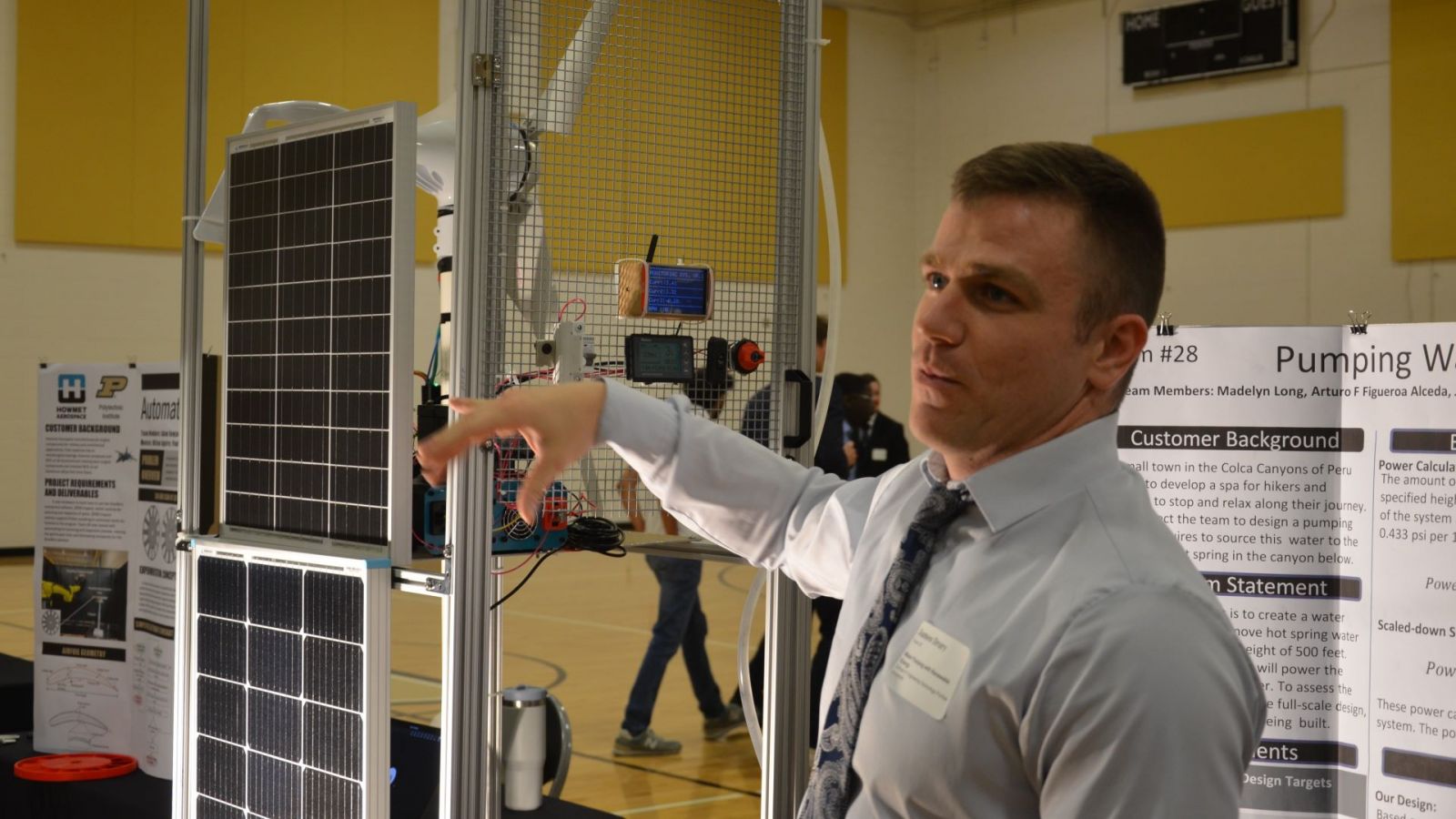
This year’s Tech Expo featured 60 projects distributed among approximately 25 sponsors. Student groups and sponsors are matched, along with specific Polytechnic faculty, to projects that will solve a tangible problem for the sponsor.
Last year’s Expo showcased around half the number of projects, thus for 2024 the student teams branched out to a wider breadth of topics and research areas.
Team 28, for instance, was sponsored by “a small town near the Colca Canyon in Peru,” according to electrical engineering technology senior James Drury.
“The town has this geothermal hot spring, and they wanted an environmentally-conscious way to pump the spring water vertically about 150 meters into a spa,” Drury said. Drury and his six teammates were the first team to work on this project, along with the help of their faculty partner and liaison with the Peruvian crew, Ralph Munguia.
“They wanted hikers journeying through the canyon to be able to stop and relax in a hot tub. … The wind in the mountains can generate about 400 watts, and each individual solar panel can generate an additional 100. The challenge was building our test model to be powerful enough to generate the 1.5 kilowatts we needed to push that water up 150 meters.
“We were able to prove that you can have a self-sustainable system. Because there’s no external output power here, it’s all being run off renewable energy.”
Other teams were involved in continuing projects, picking up where prior teams of seniors had left off. In some cases, such teams had to radically modify what came before in order to update the technology.
“This was a continuing project, but our sponsors at Bechtel [Innovation Design Center] really allowed us to go for it,” said Jacob Creviston, an energy engineering technology major from Team 6. Bechtel provides students with an abundance of tools to work on technology-focused projects, from laser cutting, electronics manufacturing, to 3D printing and more.
“We’ve programmed an electronic measurement tool and an accompanying workstation that allows you to make extremely precise cuts of 80/20-type aluminum,” Creviston said. “Just because of the degree of precision we were looking to get out of the measurement device, we redesigned basically the entire setup from where we picked up this project. And it worked out, because now we have a much more accurate measurement system and a much more portable, usable workstation.”
Several projects focused on overcoming technological barriers that have only become problems in recent times. It is only within the last few years, for example, that research capacity and commercialization in outer space has become a new frontier for many industries. Think asteroid mining or pharmaceutical production, for example.
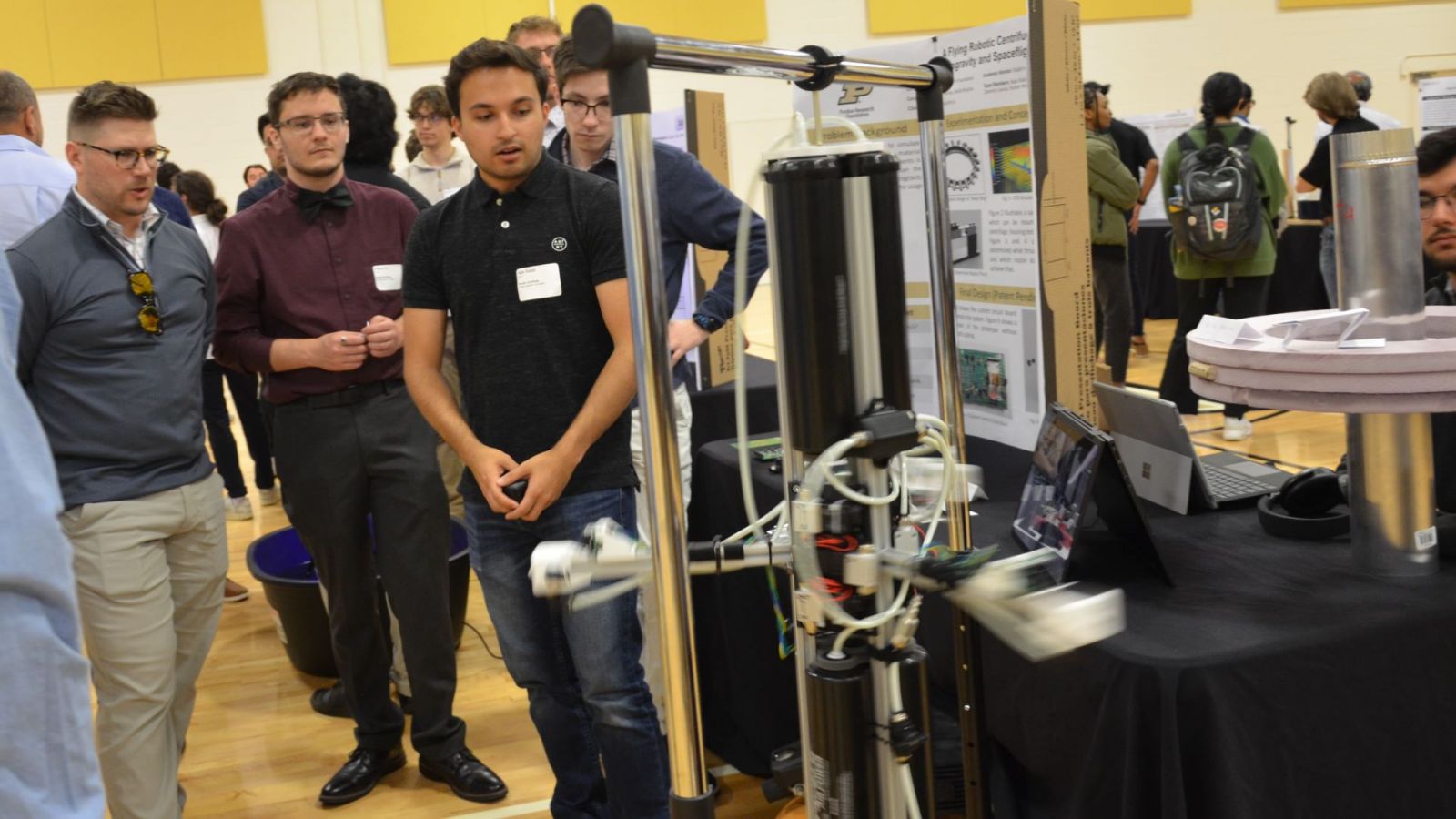
Team 4 was tasked with finding solutions to an especially tricky problem in space industries: gravity simulation. “We know, for instance, that researchers on the International Space Station [ISS] have no way of simulating 1g,” said mechanical engineering technology senior Dominic Lovisa. “1g” indicates that gravitational force in a given location is equal to what it is on Earth.
The team went about creating a centrifuge device which could reliably produce 1g, without the need for flammable fuel sources that would be banned from the temperamental, oxygen-rich environment of the ISS. They built a hydraulics-powered centrifuge, which could allow for heavy metals from an asteroid mining sample to be sorted out as though the sample was being put through the same device on Earth.
A similarly ingenious device lit up with purple UV lights was on display next to the centrifuge: Team 3’s columnar water-filtration device. This filter removes mass quantities of “forever chemicals” from water.
“This project was all from scratch—[faculty partner] Fred Berry and our sponsor Infineon had confirmed that the background chemistry would work, but we created the whole system from the ground up,” said Drake Farrell from mechanical engineering technology.
“The trick here is to increase the surface area that the water comes into contact with as much as possible, to increase the amount of time that it gets exposed to the UV light within the structure. That meant using custom-made glass beads coated in something called titanium dioxide. Those things provided maximum contact, and then any solids such as the titanium compound still in the water get filtered out as it reaches the bottom of the tube.”
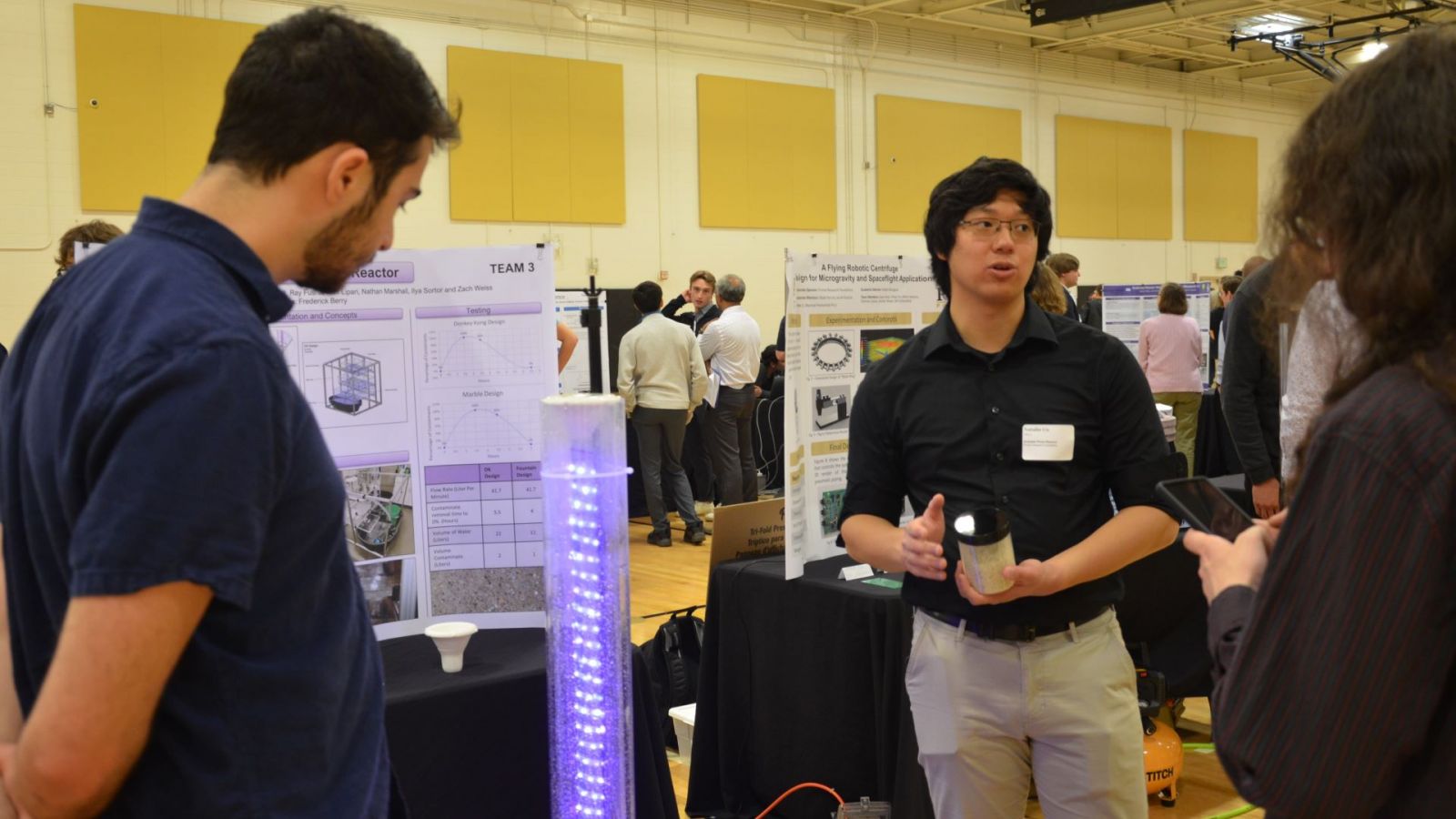
In the aftermath of the Tech Expo, the graduating seniors are no longer seen in labs across campus, where they had previously spent weeks building out their capstones. But once they graduate, many of them will move into jobs that they have already clinched in prior weeks and months.
On the floor of the Expo, students could be heard discussing upcoming roles at companies like Northrop Grumman, RoviSys, Indiana Microelectronics and more.
Additional information
- Tech Expo 2023 hosts student designs, technological solutions for businesses (Purdue Polytechnic newsroom)
- 2024 Tech Expo project and sponsor information
- Purdue Polytechnic’s School of Engineering Technology
- Ralph Munguia
- Frederick Berry
Recent News

40 Best Capstone Project Ideas for STEM Students: Shaping the Future
Unlock innovation with our diverse collection of Capstone Project Ideas for STEM Students! From coding challenges to hands-on engineering marvels, discover projects that blend your academic prowess with real-world problem-solving.
To turn all those STEM brainwaves into something seriously cool! Forget the boring stuff; we’re talking about projects that’ll make you go, “I did that!”
Imagine it like a DIY adventure, but for STEM enthusiasts. Whether you’re the coding maestro, the engineering whiz, or the science guru, these capstone projects are your VIP ticket to hands-on, mind-bending fun.
No more snooze-fest assignments; this is your moment to shine. It’s like putting a bit of your STEM genius into the real world. Ready to rock the STEM stage? Grab your curiosity and let’s turn those ideas into something mind-blowing!
Table of Contents
The Importance of Capstone Projects
Check out the improtance of capstone projects:-
Grand Finale Alert!
Ready for the ultimate showstopper? Your capstone project is like the grand finale of a fireworks display, wrapping up all your learning with a bang! It’s YOUR time to shine.
Real-Life Problem Busting!
Forget hypotheticals; it’s time to get real. Capstone projects throw you into the ring of real-world problems. It’s like being a superhero, but instead of a cape, you’ve got your brain and skills ready for action!
Mixing Skills Smoothie
Get ready to be the master chef of your skills kitchen! Your capstone project is where you throw in coding, sprinkle some research magic, and maybe even add a dash of teamwork. It’s like creating the most epic smoothie of your academic journey!
Professional World Bootcamp!
Say hello to your personal bootcamp for the professional world. Capstone projects prep you for the challenges ahead – project management, thinking on your feet, and teamwork. It’s like a crash course in being a pro!
Your Superhero Moment!
Capstone completed? Cue the superhero music! This is your moment to show the world (and future employers) that you’re not just a student; you’re a superhero who conquers challenges!
Become the Academic Adventurer!
Time to channel your inner Indiana Jones of academia! Capstone projects let you embark on a research adventure, discovering new things and leaving your mark. It’s like being the hero of your academic story!
Learning Through Action!
Capstone projects are not about snooze-worthy lectures. They’re about action! It’s like learning to ride a bike by actually riding – hands-on, immersive, and way more exciting.
Backstage Pass to Industry VIPs!
Your capstone journey might include mingling with the pros. Imagine it as a backstage pass to the industry concert. Who knows, you might end up having coffee with your professional idols!
Passion Explorer Mode On!
Capstone projects are like GPS for your passion. They help you discover what makes your heart race in your chosen field. It’s like unlocking the secret door to your dream career.
Cheers to You and Your School!
Finishing your capstone project isn’t just a solo victory; it’s a party for your school too! You both did it! It’s time to throw your cap (literally or metaphorically) and celebrate your epic achievement!
Capstone Project Ideas For STEM Students
Check out some of the best capstone project ideas for STEM students:-
Coding and Software Development:
- Craft a system where your home dances to your tune! Control lights, temperature, and security with a magic app or a simple voice command.
- Dive into a world where studying is an adventure! Create a VR experience that makes complex subjects as exciting as your favorite video game.
- Imagine an app that’s your health sidekick! Track fitness, get personalized workouts, and let AI sprinkle some health wisdom your way.
- Make voting a party with blockchain! Build a system that keeps elections transparent, secure, and as easy as tapping a button.
- Navigate campus like a superhero! Develop an AR app that turns every building into a story and every corner into an adventure.
- Bring shopping to life! Create an online store where a friendly chatbot guides users through the wonderland of products.
- Forget paper and pens! Create a system using face recognition or RFID to take attendance without breaking a sweat.
- Turn language learning into a game! Build an app that listens to your words and cheers you on to pronunciation victory.
- Unveil the secrets of social media! Develop a tool that spills the tea on trends, engagement, and the overall vibe.
- Let’s code together! Create a platform where coding becomes a group adventure, with devs jamming in real-time.
Robotics and Automation:
- Gift your drone wings and a mission! Create a drone that patrols autonomously, keeping an eye on things and reporting back.
- Make plants feel like VIPs! Develop a system that pampers them with the right temperature, humidity, and water levels.
- Rehab goes robotic! Design a helpful robot that guides and supports people through their recovery journey.
- Time for the recycling magic! Create a robot that sorts waste with a flick of its robotic wand, making Mother Earth smile.
- Send packages on a solo mission! Develop a robot that delivers parcels with ninja-like navigation skills.
- Turn factories into enchanted realms! Use PLC to weave spells that control and monitor manufacturing spells.
- Give a robot a brain of its own! Build a robotic buddy that learns from humans and becomes the ultimate sidekick.
- Create a simulator where self-driving cars practice their moves, dealing with traffic jams, tricky turns, and unexpected surprises.
- Introduce a cleaning sensation! Develop a robot that effortlessly glides through homes, making cleaning a breeze.
- Choreograph a drone ballet! Explore the magic of drone swarming, where they move as one in a mesmerizing dance.
Biotechnology and Health Sciences:
- Bring healthcare to your screen! Create a telemedicine platform where doctors make house calls through video consultations.
- Turn into a water quality detective! Craft a biosensor system that sniffs out contaminants and ensures water safety.
- Create a superhero leg! Design a prosthetic limb that listens to your thoughts, making movement feel like second nature.
- Peek into your genetic crystal ball! Develop an app that predicts your genetic future, helping you plan ahead.
- Mini superheroes inside your body! Build a drug delivery system using nanotech, ensuring meds reach the right spot.
- Make tissues like a 3D printing wizard! Dive into bioprinting, creating artificial tissues for medical wonders.
- Pop on a smart lens! Design a lens that not only corrects your vision but also keeps tabs on your glucose levels.
- Make health a breeze! Craft an app that’s your health haven, covering fitness, nutrition, and a bit of mental zen.
- Your personal medicine whisperer! Create a platform that suggests treatments based on your unique genetic melody.
- Control devices with your thoughts! Develop an interface that turns brain signals into electronic magic.
Environmental Science and Sustainability:
- Spin the renewable tunes! Design a system that jams to the rhythm of renewable energy, optimizing its beats.
- Green spaces become the stars! Create a tool that orchestrates the perfect symphony of urban greenery for sustainability.
- Send drones on a pollution patrol! Build flying scouts that report on air quality, helping us all breathe easy.
- Transform farms into tech marvels! Develop an IoT system that turns farming into a precision dance, boosting crop yields.
- Turn trash into treasure! Explore ways to convert waste into energy, making every piece of rubbish a potential power source.
- Send a cleanup crew to the ocean fiesta! Create a robot that collects plastic and keeps our oceans sparkling.
- Let the sun make fresh water! Develop a system that uses solar magic for water desalination, making the sea drinkable.
- Make electricity dance to a smart beat! Implement a grid that grooves to the rhythm of energy efficiency.
- Create packaging that hugs the planet! Design materials that decompose like fairy dust, leaving no trace.
- Turn recycling into a celebration! Develop an app that connects communities, turning trash into treasures.
Executing Your Capstone Project
Time to rock your Capstone Project! Here’s your down-to-earth guide to making it happen:
- Imagine your project as a journey. Map out the steps you need to take, like planning a road trip with cool stops along the way.
- Get your tools ready. Whether it’s a laptop, lab equipment, or a trusty notebook, gather your gear like a hero gearing up for a quest.
- If you’ve got a team, keep the chat alive. It’s like a group text for your STEM gang. Regular check-ins keep everyone in sync and ready to conquer.
- Brace yourself for twists and turns. Every challenge is a chance to learn. Think of it as leveling up in a video game—each obstacle makes you stronger.
- Celebrate the small wins. Successfully debugged your code? Dance it out. Nailed that experiment? Fist bump the air. Little victories add up to one big win.
- Stay flexible. Plans might change, and that’s okay. Think of it like a dance—you improvise and keep grooving even when the beat changes.
- Share your progress. Get feedback from your mentors or classmates. It’s like getting advice on your killer playlist—external input makes it even better.
- As you near the finish line, fine-tune your work. It’s like putting the finishing touches on your favorite jam—make it smooth and perfect.
- Keep your space tidy. A clutter-free workspace is like a calm sea—smooth sailing for your project ship.
- When it’s showtime, strut your stuff. Share your journey, the highs, the lows—it’s your moment to shine like a rockstar.
Executing your Capstone Project is a gig to remember. Ride the waves, dance to the beats, and enjoy every moment. Your STEM adventure is about to become legendary!
How do I find a Capstone Project idea for STEM?
Ready to dive into the exciting world of a STEM Capstone Project? Here’s a laid-back guide to help you snag that perfect idea:
- What gets you buzzing with excitement? Dive into your passions, whether it’s coding, experimenting, or building things. Your project should feel like a joyride, not a chore.
- Take a stroll around your world—school, community, or even your daily routine. Any pesky problems you’d love to tackle using STEM? Your project could be the superhero solution!
- Check out the cool stuff happening in the tech world. Anything catch your eye? It could be the next big thing or the missing link for your project.
- Gather your buddies, mentors, or anyone willing to brainstorm. No idea is too wild! Throw them all on the table and see which ones spark that “aha” moment.
- What skills do you want to level up? Your project is a chance to boost your superhero skill set. Pick an idea that feels like a fun skill-building adventure.
- Peek into different STEM industries. What’s cooking? Any space for your project to shine? It could be the game-changer they didn’t know they needed.
- Check out the stories of STEM heroes and sheroes. Anything inspiring? Maybe a twist or improvement on their ideas could be your ticket to project stardom.
- Join STEM hangouts, forums, or clubs. Chat with other STEM enthusiasts. You might stumble upon ongoing projects or find pals to join your project party.
- Take stock of your resources and time. What can you realistically pull off? Your project should be a fun challenge, not a stress marathon .
- Share your top ideas with your favorite teachers, mentors, or even your pet cat. Seriously, anyone who’ll listen! Their feedback can turn a good idea into a stellar one.
Remember, this project is your chance to shine in the world of STEM. So, pick an idea that feels like your own personal superhero journey—adventurous, a bit challenging, and totally awesome!
What makes a good Capstone Project?
Cooking up the perfect STEM Capstone Project? Let’s keep it as simple and engaging as your favorite recipe:
- Think about what gets you pumped in the world of STEM. Your project should feel like picking your favorite game to play—it’s gotta be exciting!
- Your project should be like fixing a real-world hiccup. Maybe it’s something bothering your school or community. Time to use STEM to be the fixer!
- Be the cool inventor! What can you add or change to make your project stand out? Get those creative juices flowing.
- Check your backpack for resources. Your project should be like planning a fun trip—it’s gotta be exciting but fit in your backpack (resources and time).
- Want to share the magic? Think about teaming up with friends, mentors, or even your science-loving cousin. Teamwork can turn your project into a group adventure.
- Treat your project like leveling up in your favorite game. It’s not just about the destination; it’s about learning new skills and having fun along the way.
- What’s hot in the STEM world right now? Your project should be like picking the coolest outfit for the season—stylish and up-to-date.
- Your project should be a bit like learning a new dance. It’s not just about the end result; it’s about the moves you learn along the way.
- Your project should be like leaving your mark on the world. How will it help others or add some extra sparkle to the STEM scene?
- Finally, imagine your project is a story you can’t wait to tell your buddies. Prepare a cool show-and-tell—clear, fun, and with a touch of magic!
So, there you have it! Your STEM Capstone Project should feel like the coolest adventure in your favorite game, mixed with a bit of teamwork, creativity, and a whole lot of fun. Ready, set, STEM-magic time!
And that’s a wrap, STEM trailblazers! As we bid adieu to our Capstone Project Ideas for STEM Students journey, just know this is not a goodbye but a “see you later” in the world of science, tech, engineering, and math.
Your chosen project isn’t just a wrap-up of classes; it’s your chance to show the world what you’re made of—pure STEM magic. Whether you’re coding up a storm, concocting experiments, or engineering solutions, your Capstone Project is your time to shine.
So, as you tackle the challenges and revel in those “Aha!” moments, remember it’s all part of the ride. Big wins, tiny victories—they all count. Your STEM journey is more like a cool series finale, leaving everyone in awe.
This isn’t a farewell—it’s your springboard into what’s next. Your project isn’t just a project; it’s your story in the ever-evolving book of STEM. Your curious mind, your ability to adapt, and the skills you’ve polished during this journey are your forever companions.
So, go on, STEM pals! Let your Capstone Project be that masterpiece that makes everyone say, “Wow, that’s amazing!” Your brilliance is bound to light up the STEM galaxy.
Rock it, STEM champs! Your Capstone Project isn’t just an ending; it’s a launch into the stratosphere of STEM greatness.
Frequently Asked Questions
What is a capstone project in stem.
A capstone project in STEM is a culminating academic endeavor that allows students to apply their knowledge and skills to solve real-world problems in science, technology, engineering, or mathematics.
Can I collaborate with industry professionals on my capstone project?
Yes, collaborating with industry professionals is a great way to gain real-world experience and insights for your capstone project.
Leave a Comment Cancel Reply
Your email address will not be published. Required fields are marked *
Save my name, email, and website in this browser for the next time I comment.
- Apply to UMaine
Mechanical Engineering Technology
Team #1 3d metal printing.
Click here to check out Team #1’s 3D Metal Printing project!
Team #2 EZ Slant Medical Device
Click here to check out Team #2’s EZ Slant Medical Device project!
Team #3 Mars Rover
Click here to check out Team #3’s Mars Rover project!
Team #4 Low-Cost Projector
Click here to check out Team #4’s Low-Cost Projector project!
Team #5 Scaled Construction Equipment
Click here to check out Team #5’s Scaled Construction Equipment project!
Team #6 3D Printed Bicycle
Click here to check out Team #6’s 3D Printed Bicycle project!
Team #7 Bariatric Rollator
Click here to check out Team #7’s Bariatric Rollator project!
Team #8 Bicycle Helmet Brake Lights
Click here to check out Team #8’s Bicycle Helmet Brake Lights project!
Team #9 Electric Scooter
Click here to check out Team #9’s Electric Scooter project!
Team #10 Automated Watering System 1
Click here to check out Team #10’s Automated Watering System 1 project!
Team #11 Automated Watering System 2
Click here to check out Team #11’s Automated Watering System 2 project!
Department of Mechanical Engineering
- Whitacre College of Engineering
- Mechanical Engineering
Capstone Design Projects
There were 24 design teams and projects. Each team worked for two semesters to come up with the design and fabrication of the project. A list of the design projects for Fall 2023 is as follows.
- Garden Grabber
- RTA Industries
- Tire Pressure Pro - 25
- Team Kilowatt
- Imagination Group - Off Grid Washing
- GSD - Beverage Dispenser
- Racing Machine
- The Refrigeraiders
- Aquatic Search and Recovery Device
- Electric Bike Design
- Grain Gobbler
- Household Injection Machine Design
- M&M Lab Injection Molding Design
- Scorch Cooler
- Pill Dispenser
- Powder Cast Oven
- Mobility Scooter Lift
- Car Rotisserie
Spring 2023
There were 24 design teams and projects. Each team worked for two semesters to come up with the design and fabrication of the project. A list of the design projects for Spring 2023 is as follows.
1. Lane Detection System
2. Campfire Steam Turbine
3. EVTOL Transition Mechanism
4. Tesla Pulse Jet Engine
A Pulsejet Engine is an engine that pulses the thrust and combustion with little or no moving parts. These engines are very inefficient due to significant heat loss, vibrations and noise. A Tesla valve is designed as a check valve with no moving parts by relying on the direction of flow. The Tesla Pulsejet Engine was designed to investigate the use of a Tesla valve as a control valve before the intake on a Giant Chinese Valveless Pulsejet Engine. The device consists of the mechanical engine body system, mechanical fuel system and electrical ignition system.
Team Members: Anna Slovak, Ben Jensen, Zach Lee, Tyler Maurer, Bodee Humphreys, Jake Bradford
Instructor: Turgut Baturalp
5. Forklift Hydraulic Fluid Heater
6. Frost Fan
7. Beach Wheelchair
8. Automated T-Post Driver
Problem Statement: T-Post instillation processes are slow and labor intensive, there is a need for easier, economically viable solution. Objective: Develop a remote operated machine that drives multiple t-posts without user assistance. Design Criteria: • Total weight < 250lbs (max load for UTV) • Performance in all terrain environments • Projected production cost < $750/unit
Team Members: Colton Black, Dane McMahon, Kallista Kunzler, Will Shaw, Nathan Sullivan
Instructor: Dr. Paul Egan
9. Automated Ratchet Strap
Mission Statement: Our mission is to revolutionize cargo transportation by developing an innovative auto-tightening ratchet strap that not only secures the load but also displays the force on the load. Our strap's intelligent design ensures that it auto-tightens when straps loosen during load shifts on a journey, providing reliable and safe transportation for our customers' cargo.
Team Members: Logan Fox, Corentin Menand, Jake Witte, Agustin Gonzalez, Zander Goodwin, Nathan Shapiro, and Blake Parr
10. Upper Body Exoskeleton System
In our first semester, the goal of our exoskeleton design was to assist individuals with degenerative muscular conditions or physical limitations. During this time, we toggled between single-arm designs of a wheelchair-attached or physically-fitted device. This semester, the project deviated towards a more robust, upper body, Iron Man-esque design after realizing the oversimplicity of our original design. This system is now capable of dynamic and static load-lifting with the options of dual-arm or individual arm control. The wholistic design and the specific solutions realized to make this project possible have great potential for both industrial and personal use.
Team members: Kim Bezeau, Nicholas Villagran, Brett Ferguson, Cesar Jimenjez, Tyler McLemore, Sahil Patel
11. Cycling Aid
The most challenging part is creating a design that accommodates as many people with arm or motor disabilities as possible. The design needs to be adjustable to fit different genders and body shapes. It will be important to create attachments that are easily installable for the user or that can be taken to a local bike shop install. Our attachments must be designed to adhere to a bike like common bike attachments are to avoid installation difficulties. Our project combines a balancing element, steering element, and braking element to allow safe use of a bicycle and can be installed at a regular bike shop.
Team members: David Batres, Yvonne Cebe, Connor Davis, Alex Fanos, Nasser Filty, Leighton Mitchell, Austin Skender
12. Star Forge: Space Mining with Plasma
The ability to access raw materials in space has been identified as a necessary step in NASA's goals of establishing sustainable human presence in space. However, the processes used today to extract and refine these materials are far too heavy and complex to be transported directly into space. The present design solves this problem by providing a light-weight system capable of refining critical compounds without the use of chemical reactants sourced from Earth.
Team members: Aaron Chadwick, Adrian Brink, Devon Yeager, Francisco Aguilera, Luke Jackson, Max Kennedy, Parker White
13. Knee Device
Knee injury accounts for 41% of all sports injuries”; is a quote from an article published in the British Journal of Sports Medicine written by Dr. Parag Sancheti and colleagues. Described in the article are important risk factors related to a knee injury and common methods of both prevention and treatment. These include surgery and rehabilitation of the mentioned common types of injury. We see that there are many people who could benefit from a design improvement in physical therapy techniques that offers a portable and effective option to existing technologies such as CPM machines.
Team members: Pinak Bhuban, Trey Vela, Eric Arevalo, Brianna Wilkerson, Sean Atchue, Evan Potvin
14. Floating Arm Trebuchet
15. Telescopic Arm
16. Asteroid Core Examiner Probe
17. Pneumatic Pit Bike
18. Automated Stick Charring
19. Baseball Pitching Machine
20. Small-scale Turbo Jet Engine
Turbojet engines have been used in aerospace applications for over 80 years to achieve high flight performance and power output. This design project's goal is to produce a working turbojet engine using materials and resources that the University provides, along with material anyone can buy from a hardware or hobby store.
Team members: Weston Wright, Joseph Scheffey, Brett Shaw, Colby Reynolds, Harrison Childre, Jayce Jensen, Garrison Stevens, Jacob Wilhelm
Instructor: Dr. Jeff Hanson
21. 7 Seas Water Sample Collection Boat
Playa lakes are primarily filled with runoff; therefore, they are prone to contamination. We created a remotecontrolled boat designed to collect water samples, eliminating the need to wade into potentially contaminated waters. Our design will simplify the process by decreasing collection time and increasing sampling efficiency.
Team members: Allie Smith, Blake Moore, Carly Weaver, Carl Cassel, Christopher Smith, Nathan Broyles, William Schaap
22. ASME Renewable Vehicular Robot
One way to increase renewable energy production is by developing devices that can charge directly from the sun and the wind without drawing power from the grid. If enough devices are developed with this capability, it will reduce the strain on the power grid and alleviate reliance on non-renewable resources.
To develop technology for renewable energy devices by designing a Renewable Vehicular Robot (RVR) for use in the ASME Student Design Competition.
Team members: Akshata Bhide, Alejandro Cardenas, Oluwasayofunmi Felix-Aremo, Blake Houldsworth, Elliot Pak, Joshua Ramon Dira, Deborah Ukoha
23. Solar Assist Trike
The Solar Assist Trike Design Project was started to satisfy the needs of a pollution-free, on-the-go charging form of transportation. With the use of a solar panel to charge several batteries that power a motor, the idea is that the rider will only need to pedal at a steady, comfortable pace while still maintaining speeds above 10 mph. After finalizing our deign, we were able to bring into fruition a working protype which we believe successfully fulfills the goals of this design project.
Team members: Troy Gallagher, Andrew Evans, Joe Wagner, Israel Paz, Cameron Clancy, Carson Johnson, Samuel Hoyl, Bradley Daniel
Faculty advisor: Andrew Mosedale
24. NASA Rover
The NASA Human Exploration Rover Challenge is an annual international competition where colleges and high schools are tasked with creating a human-powered rover to explore the surface of Mars and complete water collection tasks.
Team members: : Kierya Freiboth, Nova Goulet-Cyr, Travis Isburgh, Alexis Jimenez, Mateo Robles, Mary Roccaforte, Rebecca Stokes, Tianzheng Wang
Faculty advisors: Roy Mullins and David Myers
- Engineering Home
- Giving Opportunities
- Prospective Students
- Undergraduate Studies
- Graduate Studies
- Pre-University / Outreach Programs
- Engineering Alumni & Friends
- Engineering CONNECT
- Current Students
- Undergraduate Students
- Faculty & Staff
- Faculty & Staff Hub
- Departments
- Department of Chemical Engineering & Applied Chemistry (ChemE)
- Department of Civil & Mineral Engineering (CivMin)
- Division of Engineering Science (EngSci)
- The Edward S. Rogers Sr. Department of Electrical & Computer Engineering (ECE)
- Department of Mechanical & Industrial Engineering (MIE)
- Department of Materials Science & Engineering (MSE)
- Institute of Biomedical Engineering (BME)
- Institute for Aerospace Studies (UTIAS)
- Institute Transdisciplinary Engineering Education & Practice (ISTEP)
The 2023-2024 MIE Capstone Design Showcase Honours and Awards Innovative Student Projects
The end of term saw fourth-year Mechanical and Industrial Engineering students culminate their year-long Capstone Design projects at the annual MIE Capstone Design Showcase. A total of 80 teams, comprising over 330 students, presented their prototypes, posters, and final recommendations to faculty and industry clients at Hart House. The caliber of projects was outstanding and offered innovative solutions to all of the clients involved with some of those projects receiving awards. The MIE490 and MIE491 award winners are listed below.
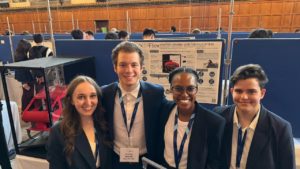
Team Safran2 (Samantha Butt, Lydia Callender, Jeremy Mainella and Ana Vukojevic) won the 1st Place Capstone Design Project Award (Mechanical) and John H. Weber Scholarship
1st Place Capstone Design Project Award (Mechanical) and John H. Weber Scholarship
Project Title: Adaptive Landing Gear for Helicopters / Project Supervisor: Professor Matthew Mackay
SAFRAN Landing Systems wanted to design a safer way for rescue helicopters to land on steep terrain and team members Samantha Butt, Lydia Callender, Jeremy Mainella , and Ana Vukojevic delivered. The result is “AeroFlex” – an innovative flexure-based landing gear prototype that is lightweight and adapts to a 20-degree sloped terrain. Rescue helicopters can perform safer and more efficient maneuvers in mountainous terrain in response to the thousands of calls the Canada National Search & Rescue program receives each year.
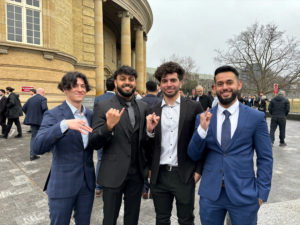
Team Mott MacDonald (Varun Kamboj, Mika Sustar, Marzuk Khan, and Matin Sarahi) won 1st Place Capstone Design Project Award (Industrial) and Peri Family Industrial Engineering Design Award
1st Place Capstone Design Project Award (Industrial) and Peri Family Industrial Engineering Design Award
Project Title : InfraPOV: Infrastructure Public Opinion Visualizer / Project Supervisor : Professor Scott Sanner
Numerous stakeholders participate in the development of large-scale infrastructure projects. Mott MacDonald wanted to move away from the industry standard of manually evaluating comments and concerns to provide their clients with more accurate data to reflect constituent voices. Enter “InfraPOV: Infrastructure Public Opinion Visualizer” a design by Capstone team Varun Kamboj, Mika Sustar, Marzuk Khan, and Matin Sarahi , which leverages Large Language Model technology to sum up and categorize huge swaths of data from unstructured comments. Time spent analyzing stakeholder data was reduced by 95%, offering Mott MacDonald a more efficient way to extract insights from public opinion and provide clients with meaningful solutions.
2nd Place Capstone Design Project Award (Mechanical & Industrial)
Project Title : Thermal Characterization and Simulation Framework of Large-Format Electric Vehicle Lithium-Ion Batteries / Project Supervisor : Professor Cristina Amon
Lithium-ion battery performance and safety can be negatively affected by the heat generated during charging and discharging. The ATOMS Laboratory team produced an innovative experimental approach to characterize and enhance the thermal performances of novel battery systems. Team members Daniel Lee, John Abellanoza, Noah D’Emilio, and Mitchell Chong , designed and prototyped several cell test rigs and accurately incorporated realistic operating conditions of battery cells in commercial electric vehicles (EVs) and stationary battery energy storage systems (BESS). The team added I-shaped cooling fins to the battery module design to create more equal temperature distribution across the cell and lowering overall temperature by 10% to enable faster charging.
Project Title : Modelling and Evaluation of a Tier-Based System for Grandview Kids Children’s Treatment Centres / Project Supervisor : Professor Vahid Sarhangian
Reducing rehabilitation wait times is a priority for Grandview Kids (GVK) , a Children’s Treatment Centre. Using simulation modeling, the Capstone team of Max Beggs, Claire Shaw, and Jose Pablo Siliézar analyzed the effects of a tiered intervention system to improve patient flow. Moving away from the current non-tiered system of assessments and 1-on-1 appointments, the team constructed a simulation model in Python to include Tier 1 Workshops and Tier 2 Group Therapy interventions to provide temporary treatment options to patients. This tiered system was found to decrease queue sizes and wait times by up to 20% and provided evidence-based recommendations to enhance patient flow management and provide equitable access to care for children with developmental delays.
3rd Place Capstone Design Project Award (Mechanical & Industrial)
Project Title : Experimental Methodology For Measuring Propeller Noise / Project Supervisor : Professor Kamran Behdinan
Drones in aviation are noisy and as they are used more frequently, the increase in noise levels is cause for concern. Tiffany Costas, Daniel Roberts, Adli Hijab, Peter James Mason, and Nicholas Bajaikine worked with their ARL-MLS Laboratory client to find a solution. An optimal propeller design is a promising way to mitigate noise pollution and collecting noise data to determine efficacy was the team’s objective. The result was a testing apparatus prototype that measured detailed and flexible propeller noise characterization from many different propeller geometries. This final product offers the flexibility of rapid testing within the lab at a lower cost than the current market alternatives.
Project Title : Emergency Department Resource & Scheduling Allocation to Optimise Efficiency / Project Supervisor : Professor Michael Carter
Project client Humber River Health (HRH) has the busiest Emergency Department (ED) in Ontario and wants to find ways to optimize patient flow and reduce wait times. Team members Andrew Barton, Emma Beaumount, Maia Kanceljak, and Alexandra Hon used simulation technology and data analytics to find solutions. Following an ambulatory patient’s journey until seen by a physician, the team determined that reallocating nurse staffing numbers at different shift stages would reduce time-to-physician initial assessments (PIA), and minimize overall wait times.
-Published by Kendra Hunter on May 16, 2024
Department of Mechanical & Industrial Engineering University of Toronto 5 King’s College Road Toronto, Ontario • M5S 3G8 • Canada Phone: +1-416-978-3040
Traditional Land Acknowledgement
We wish to acknowledge this land on which the University of Toronto operates. For thousands of years it has been the traditional land of the Huron-Wendat, the Seneca, and the Mississaugas of the Credit. Today, this meeting place is still the home to many Indigenous people from across Turtle Island and we are grateful to have the opportunity to work on this land.
© 2024 Faculty of Applied Science & Engineering

Best Capstone Project Ideas for Engineering Students
“Projects that we have completed demonstrate what we know-future projects decide what we will learn”
-Dr. Mohsin Tiwana
We learn more from life from the things that we experience than from the things that we read in books and classes because theoretical knowledge doesn't give us practical experiences. That is why we need to do projects, and when it comes to doing engineering, then doing projects is must, I mean If you have put those 4 years of your life in learning engineering and its subjects then what is its use If you can’t work on a project by using and upgrading your project?
So, the next thing that haunts each one of us before thinking of doing something new is where to start from?
Well, then you are at the right place because here I am going to discuss with you some good capstone or let's say it some good capstone engineering projects that you can have a good time with!
Have you checked out our projects on Mechanical yet? Mechanical Kit will be shipped to you and you can build using tutorials. You can start with a free demo today!
1. 3D Printer
2. Automobile Prototyping
3. CNC Machine using Arduino
4. Project Management with Primavera
So, Are You Ready For It!
Learn more about capstone projects
What is a capstone Project in Engineering?
A capstone project is the research work of a student for a year or more, in which the student selects a particular topic and does the required research by gaining information from all the possible sources that he/she can.
This lets the student in having a better understanding of the subject and give an edge over others because others have just studied theoretical skills but you have gone in-depth and understood the subject.
Practical experiences are always appreciated more than the theory because that’s where your real knowledge is tested.
Sounds cool! Right?
Now, let’s come to some best capstone engineering project ideas!
Explore more capstone projects
Latest projects on Mechanical
Want to develop practical skills on Mechanical? Checkout our latest projects and start learning for free

Best capstone engineering project ideas
1. Home Automation Using IoT
Anyone who denies from the idea of automatically working homes is lying for sure because we humans are always super-duper lazy in doing households and keep looking for the easiest ways in which we don't have to work? Sounded Relatable?
Well, then we can make a capstone engineering project in which you can learn how to pair all your electronic home appliances with Bluetooth so that they can perform the given task on your own by one click or command by the simple IoT applications.
Learn more about this project
Skyfi Labs helps students develop skills in a hands-on manner through Mechanical Online Courses where you learn by building real-world projects.
You can enrol with friends and receive kits at your doorstep.
You can learn from experts, build working projects, showcase skills to the world and grab the best jobs. Start Learning Mechanical today!
2. Animatronic Hand:
What if you could create a machine that could be controlled just by your hand and finger gestures or facial expressions or a robot intimating animal.
Well, such robots are called Animatronic Hand!
These also imitate humans and animals.
This capstone engineering project will help you in understanding the making and working of this Animatronic Hand
By working on servo motors which will act as actuators with the design, fabrication and flex sensors,
You will also get to work with Ardunio Architecture and its programming
3. Smart Energy Meter using GSM:
The generation and supply of electrical energy are one of the widest used applications of electrical engineering.
This capstone engineering project is a great learning source for the students who want to go in the field of energy generation and control and talking about this smart energy meter then this is called smart because it keeps and gives the record of total energy consumed and the energy lost via sending SMS periodically so that the unnecessary loss of energy can be avoided
This project also involves Arduino Architecture and its Programming. Along with it, you will learn about the electrical loads and measurement and the working and the application of the GSM technology.
4. Home Automation System:
Home automation is a kind of project you will always have fun working with, this project is unlike the earlier discussed Home automation project, as it has so much more to learn like the system framework of home automation, then you will learn about the Bluetooth communication.
That’s all? No dear, along with this you will also learn about the relay driver circuits and also about the 8051 architecture and its programming!
5. Solar and Smart Energy Systems
The solar energy obtained from the sun’s rays is a renewable source of energy and that’s the reason Solar energy and its smart energy generation are something which will never go out of trend, at least till the earth is getting sun rays in abundance.
This is one of the reasons electrical engineering is more persued and job secured as electrical energy is also used for the generation of energy in big plants and industries.
Hence, to enhance such energy generation skills and knowledge one must learn about the Solar energy and smart energy systems.
This project will help you in the study of the IR sensors and its applications. You will also get an idea about the Solar and Smart energy system frameworks.
Along with it, you will learn about the working of the solar panels and the application of Ardunio Architecture and its programming.
6. Automatic Solar Tracker
As discussed earlier solar energy is among the most used and most in-demand resources, and automatic solar energy tracking is an important skill to learn because not only sunlight alone matters but also obtaining it from the right direction matters to make the most out of it.
And such Electrical project helps one in gaining more and more industrial exposure and giving one an edge over others.
In this capstone project, you will learn about the working of solar energy systems, along with it you will also learn about the photoresistors in the electronic systems and will have to work with Arduino Architecture and planning.
Learn more about Automatic solar tracker
7. 3D Printer
No doubt 3D printing is the future of every developing nation and as the technology will keep on going forward the demand for the people who know 3D printing will keep on increasing.
Therefore, knowing, understanding and practising 3D printing with a self build-up 3D printer will give you an edge over others.
By working on this capstone project, you can easily print out a 3D object from a CAD model. This course involves the application of Ardunio programming with additive manufacturing and the use of RAMPS Board, SMPS &motor Driver.
8. Smart Traffic Lightening Systems:
The traffic in the world is increasing as the population of the world is increasing.
Urbanization is on the rise and day-by-day different methods and systems are getting used to making things smarter and smarter.
So, it is the same trying to be done with the traffic lights. This capstone engineering project will help you in making smart traffic lighting systems.
Any kind of Ardunio, electrical, mechanical or mechatronic projects can be picked up as a capstone project like:
- Automation with PLC
- Persistence of Vision
- PCB Manufacturing
- Health Monitoring wearable
For more information about good capstone projects for engineering you may go on the links below:
- Mechatronic capstone project
- Raspberry-pi capstone project
- Electronics capstone project
- Mechanical capstone project
I hope you got some good capstone projects from this article. If you have any queries let us know in the comments section.
Join 250,000+ students from 36+ countries & develop practical skills by building projects
Get kits shipped in 24 hours. Build using online tutorials.
Blogs you might like on Mechanical
Subscribe to our blog.
Stay up-to-date and build projects on latest technologies
☎ Have a Query?
There is currently no content classified with this term.
Capstone Design Projects
Become an industry partner.
In our final-year capstone design course, our fourth-year students work directly with clients in industry to help solve practical engineering problems. We are always looking for industry partners with design projects we can match with our students.
Our industry partners have the unique opportunity to receive the output of 160 hours of work per student – 80 in the design stage and 80 in the prototyping stage. With teams of four or five students, this adds up to between 320-800 hours of work on each completed project.
By participating in this design course, you will have the opportunity to work with one of our faculty members and engage with students who could be potential new hires in your industry.
An Ideal Capstone Design Project
The ideal capstone design project is a challenging design problem related to a real industrial application that is likely to be implemented. Projects do not need to be pure mechanical design - they can include analysis, process development etc. There is plenty of scope to include any project that provides a practical engineering challenge to the student team. Preferably, the client representative should be an engineer. The project should not be on the critical path to any time-sensitive client goals. There is always the risk that student designs may not meet deadlines, or the solution may not be feasible to implement.
Client Commitments
The client is expected to provide a cash amount of $1,500 to support the program, cover material and machine shop costs, and provide in-kind support, including:
- Clearly define the scope and objectives of the project
- Provide necessary technical information specific to the industry or project
- Provide feedback on proposed approaches to the problem
- Typically, across an hour a week over 12 weeks, no marking is required
- An opportunity for students to visit the client site (if located in Ontario)
- A signed letter of support on company letterhead to assist us in securing matching funds from government sources.
Projects only proceed in the winter semester with the approval of the client, the student team, and the course instructional team. The client commitment includes continued staff time plus any additional resources necessary to complete the project. These include materials, machine shop expenses, equipment purchases/rentals, etc. A budget for these costs will be established before any work begins.
Queen's Commitments
The course coordinator will aim to find you a suitable student team to match up with your project, although there may be more projects than teams available.
Our course instructor meets with the students every two weeks to monitor progress and give project management guidance. Our instructor evaluates their work from both a communications and management perspective and offers feedback to encourage innovative solutions.
Each project is assigned a faculty advisor who will meet regularly with the students to give specific technical guidance and monitor progress. The advisor will evaluate their work from both a technical and communications perspective and provide feedback to encourage improvements to the designs.
The students will spend 8-12 hours on the project in a typical week over ten weeks in both the fall and winter terms. They will consult with the client, usually by email or conference call, regularly throughout the term.
Students will provide the client with:
- Regular progress updates
- A copy of the final design report by mid-December
- A copy of the final project report by the end of April
- Other deliverables as specified throughout the year
Project Descriptions
Each project requires a description so we can match student teams with projects. These descriptions are posted on the course web page for students to review, so they should not contain any proprietary information. In the first week of classes, students submit a letter of intent applying to the projects they would prefer to work on.
The annual nature of the program means we need to get descriptions ready for review by the students before they start classes in early September. Ideally, discussions about project ideas should happen in June/July.
If you have an idea for a project, or questions on how to get involved, please contact the course instructor, Jan Sneep, to discuss the next steps.
Jan Sneep, P.Eng [email protected] 613-533-6000 ext. 79575
2021 Capstone Projects
Welcome to the digital component of the 2021 Engineering Showcase! Navigate via the links below to view the project posters and videos from student teams in the different engineering disciplines.
This site is best viewed on a large screen.
- Capstone 2021 Biological Engineering
- Capstone 2021 Biomedical Engineering
- Capstone 2021 Civil Engineering
- Capstone 2021 Electrical & Computer Engineering
- Capstone 2021 Engineering Junior Design
- Capstone 2021 Mechanical Engineering
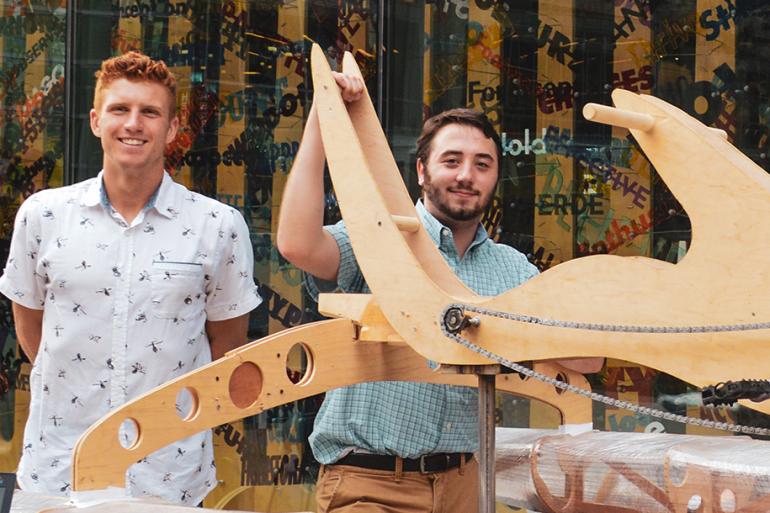
Project Links
Biological engineering.
View the Biological Engineering Senior Capstone Projects.
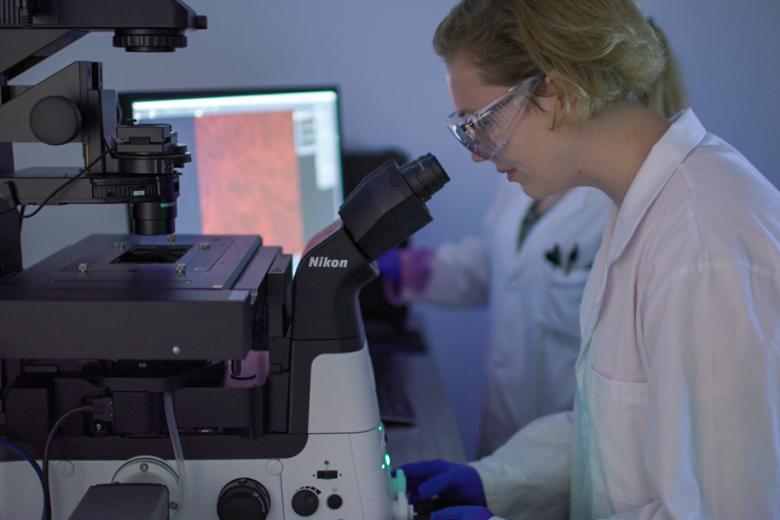
Biomedical Engineering
View the Biomedical Engineering Senior Capstone Projects.
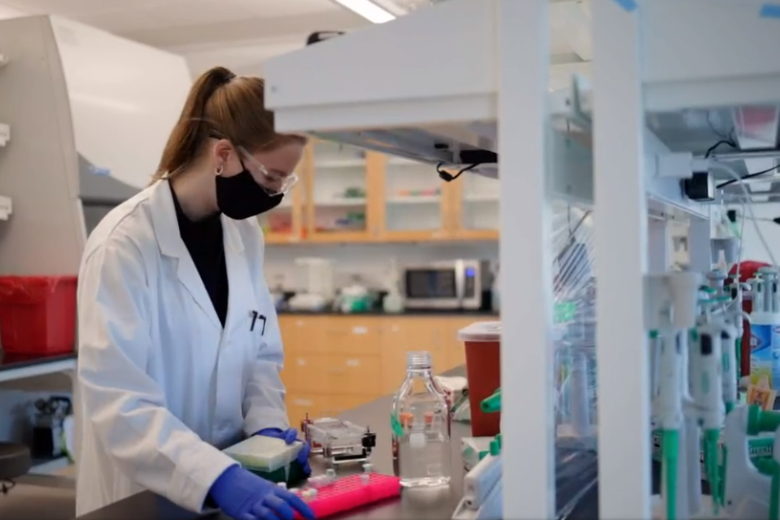
Civil Engineering
View the Civil Engineering Senior Capstone Projects.
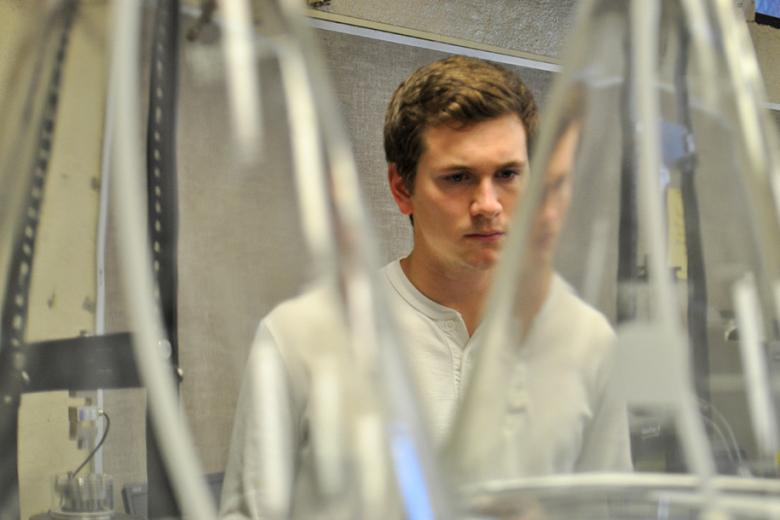
Electrical & Computer Engineering
View the Electrical and Computer Engineering Senior Capstone Projects.
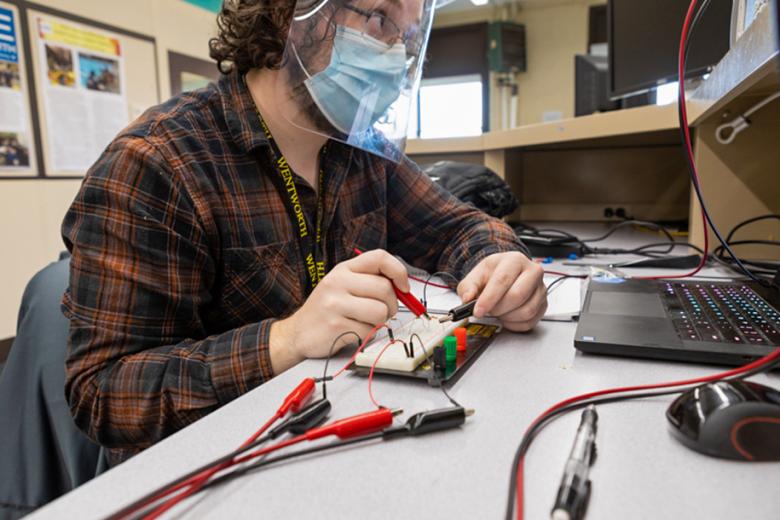
Engineering Junior Design
View the Engineering Junior Design final projects.
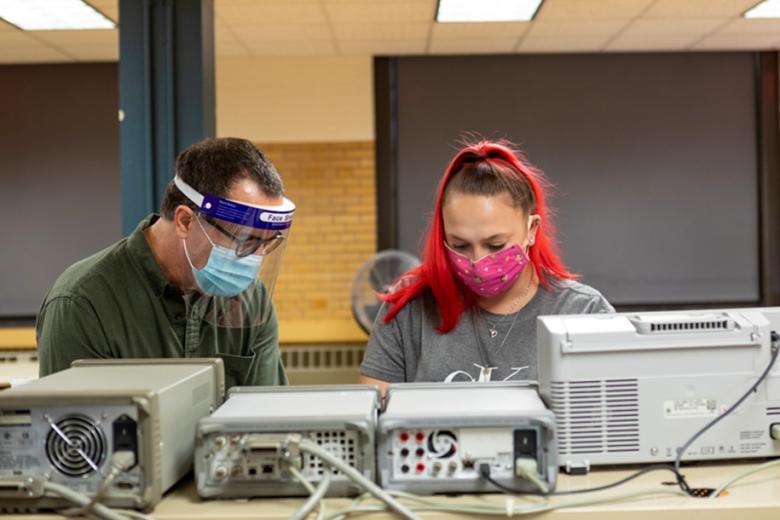
Mechanical Engineering
View the Mechanical Engineering Senior Capstone Projects.
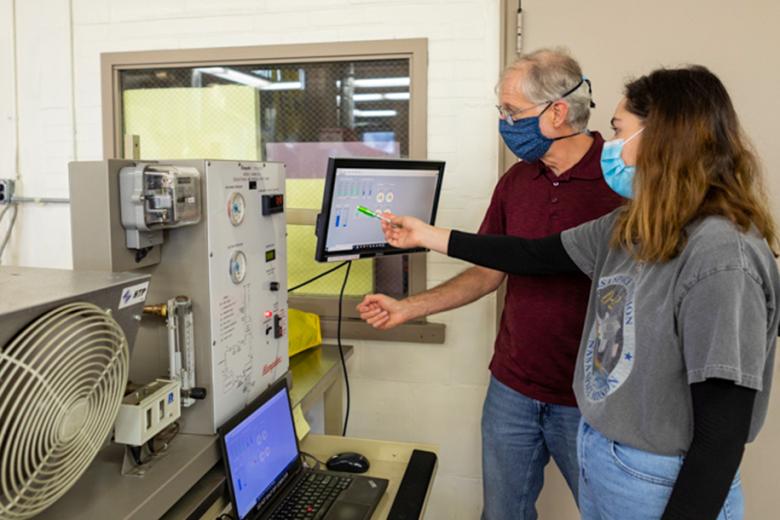
You are in a modal window. Press the escape key to exit.
Quick Links
- Undergraduate
- Faculty Directory
- Staff Directory
- Accreditation
- Advisory Board
Mechanical Engineering
Posters of Previous Projects
The following are PDF files of posters of successful Senior Design Capstone Projects and Embedded Projects presented at the annual Projects Day held in May of each calendar year.
AY 2019-20 (May 2020)
IN PROGRESS
AY 2018-19 (May 2019)
3D Plasma CNC Machine (Partner-led project) 3D Printed Samples (Partner-led project) Anechoic Chamber-Tabletop (Partner-led project) Anterior Tilt Wheelchair (Partner-led project) Automated Bottling System (Partner-led project) Baja SAE (Partner-led project) Battery Swapping Mechanism (Partner-led project) Carton Forming Tool (Partner-led project) Corona Discharge (Partner-led project) High Pressure Testing Chamber (Partner-led project) Lift Gate Redesign (Partner-led project) Mobile Loading Crane (Partner-led project) Packing Line (Partner-led project) Perovskite Solar Cells (Partner-led project) PLC Bottling (Partner-led project) Robotic Arm Material Handling (Partner-led project) Seasoning Mixer (Partner-led project) Vacuum Conveyor (Partner-led project) VEB Stage - (Partner-led project) WaterPurificaiton (Partner-led project)
AY 2017-18 (May 2018)
3D BioPrinter (Partner-led project) 3D Sannner (Partner-led project) BajaSAE (Partner-led project) BajaSAE Suspension (Partner-led project) Energy Harvesting (Partner-led project) Flange Fitting (Partner-led project) Indexer-Conveyor Belt ( Partner-led project) Poly Quarter Fender (Partner-led project) Steering Angle (Partner-led project) Towel Counter (Partner-led project) Tube Finning Machine (Partner-led project)
AY 2016-17 (May 2017)
Baja SAE (Partner-led project) Vehicle Bed Design (Partner-led project) Cookie Topping Device (Partner-led project) Electric Static Energy Harvesting (Partner-led project) ElectroActive Composites (Partner-led project) Implement Test Run Module (Partner-led project) MRF Knee (Partner-led project) NanoCooling (Partner-led project) Nanotube Composites (Partner-led project) Super Charger Test Rig (Partner-led project) Vibration Energy Harvesting (Partner-led project) Water Purify (Partner-led project)
Resealable Can ( Experience-project) Robot Arm Pedestal ( Experience-project) Trash Bag Stopper ( Experience-project)
AY 2015-16 (May 2016)
Evaporative Cooler Circuit Stacker (Partner-led project) Ford Transit Poptop (Partner-led project) Formula SAE Drivetrain (Partner-led project) Formula SAE Suspension (Partner-led project) Full Layer Palletizer (Partner-led project) Nanofluidic Energy Conversion (Partner-led project) Press Brake Sheet Follower (Partner-led project) Standardized Box Quality Control (Partner-led project) Tremor Reduction Device (Partner-led project) UAV for Safety (Partner-led project) Vacuum Pick (Partner-led project) Wheelchair Power Add-on (Partner-led project)
3D Cooling ( Experience-project) AutoTee ( Experience-project) Dual Compactor ( Experience-project) Phone Grip ( Experience-project) PVT Cooling System ( Experience-project)
- Last Updated Jul 31, 2022
- Our features
- How we work
Engineering Capstone Project Ideas to Explore
This field of study seems to be rocket science. Yet, learners with a technical mindset and a deep interest in how things work can ace the course and get a degree in this area. As a rule, the final stage of studies is a capstone project. It may look like a totally new task and cause confusion in learners.
Now, what is a capstone project in engineering ? Where to find good engineering capstone project ideas? Where to seek help if you’re totally stuck? Read on to find all the answers.
What Is an Engineering Capstone Project?
When we talk about capstone project engineering students should complete, it’s the final stage of course completion. In most cases, learners are tasked with a capstone project to show how they can link theory and practice. They are required to find a real-life problem and offer competent solutions to it. The project’s duration is around one year. This time is more than enough to do extensive background research, problem identification, and writing.
Many students are afraid of this task because they think that an engineering capstone project is necessarily hard. We’d like to dispel your fears and doubts. Things are not as scary as you might think. Yet, you will need in-depth knowledge of fundamentals to ace this task.
Where to Look for Capstone Project Ideas for Engineering?
The first place to find ideas is your tutor or supervisor. These people are assigned to you as superior experts in all aspects of science. So they can help you find the right direction and formulate a topic.
You may also scan the Web to see what’s trending in your sphere now. What technologies are regarded as promising? What technical issues is the community struggling with? All of these aspects are worth researching to give your professional community real value.
Capstone Project Engineering Specifics
Now, let’s talk a little about the nuances of doing this project. What skills will you need to get it done? How does capstone differ from other science writing tasks?
The first point to keep in mind is that this task is deeply practical. In other words, you can’t just take a topic from your book and cover it in depth. You should offer a solution to a real problem that exists in the respective practices. Thus, the simplest way to go is to look around you. What issues and bottlenecks can you see? What troubles do you observe? The more attentive you are, the quicker the solution will be.
Second, you should be competent in the chosen topic. It’s hard to compose a capstone work on a subject you scarcely know. So, be realistic about the level of your knowledge. Read extensively, ask your tutor, and consult technical practitioners. Once you see the topic is clear, it’s time to sit down to capstone writing.
Engineering Capstone Project Ideas
We want to help you out and ease your work on the pending capstone project. So, we’ve hand-picked several winning capstone project ideas, mechanical engineering and other professional areas are covered.
Here’s a list for your quick inspiration:
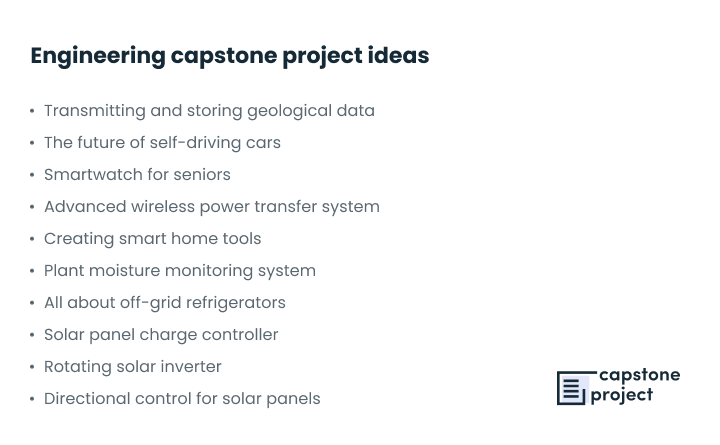
Mechanical Engineering Capstone Project Ideas
- Compact, energy-efficient portable water filters in arid regions.
- Automated robotic arm design in small-scale manufacturing facilities.
- Solar energy-powered cooling vest for workers in high-temperature settings.
- Durable prosthetic limb for children.
- Vibration damping system in areas with high earthquake risks.
- Small-scale vertical wind turbine design.
- A smart waste segregation system in automation of recycling operations.
- Aerodynamic equipment for drag reduction in trucks.
Electrical Engineering Capstone Project Ideas
- Low-cost, open-source oscilloscope design.
- Propose a next-gen lithium-ion battery technology to address lifespan limitations.
- Propose innovative use of conductor-loaded ceramics.
- Design an IoT-based smart home system for optimal energy usage.
- Propose a solution to your local industrial facility’s operational problems using steam turbine prime movers.
- Create a high-efficiency solar panel with a sun-tracking feature.
- Propose an autonomous robot’s design that is operational in hazardous settings.
- How can electrical networks be protected from natural disasters?
- Design and simulation of a smart grid system.
- Create a wearable device for heart parameter monitoring.
Engineering Capstone Project Ideas High School
- Build a solar energy-powered vehicle from recycled raw materials.
- Design a rainwater harvesting system for small home garden applications.
- Create a coded LED light with specific operation parameters.
- Design a smartphone-controlled robot.
- Create a mini turbine for wind energy capture.
- Build a water filtration system using available materials in your household.
- Propose a mechanical hand design for hydraulic operations.
- Create a simple yet innovative hydroponic system for home-grown herb production.
Computer Engineering Capstone Project Ideas
- Propose a blockchain-based voting system for community elections.
- Design cybersecurity software to prevent IoT system hacking.
- Create an AI-powered personal finance management app.
- Engineer an ML model that analyzes stock prices.
- Build an AI algorithm diagnosing diseases by MRI scans.
- Suggest a deep learning algorithm in healthcare record management.
- Introduce a P2P file-sharing system that removes the need of centralized servers.
- Create a VR educational platform to use during history classes.
Industrial Engineering Capstone Project Ideas
- Propose manufacturing facility improvements for waste reduction.
- Apply IoT sensors and analytics to build a predictive maintenance app.
- Create a human-robot interaction interface for industrial activity automation.
- Engineer an ergonomic workplace solution to raise employee productivity.
- Design a lean manufacturing toolkit to improve staff onboarding.
- Create dynamic job scheduling algorithms to improve workforce allocation.
- Suggest a sustainable supply chain model to reduce your local plant’s carbon footprint.
- Build a simulated evacuation model to efficiently respond to disasters.
Get Help with Capstone Project Engineering Here

You have an opportunity to get your capstone project done week by week by the same writer according to the timeline.
We write your capstone project from the ground up and double-check it with plagiarism detection software.
We assign no general writers to your order. You are guaranteed to work with one of the top-rated PhD/MA experts in your area.
Texas Tech Now
Engineering capstone project yields useful tool.
May 17, 2024
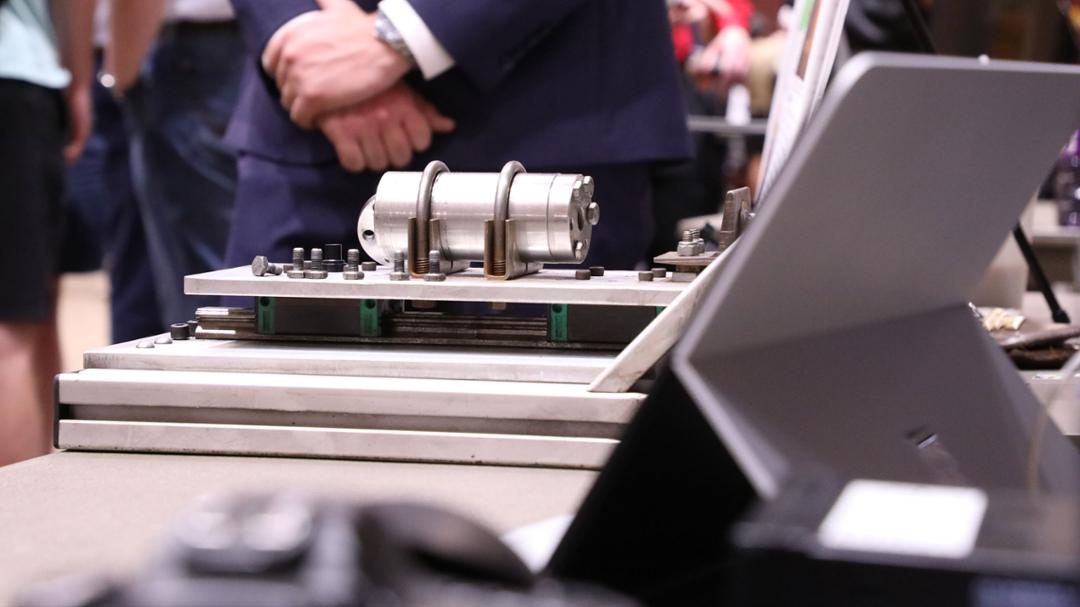
A piece of research equipment made by students will be used in the Edward E. Whitacre Jr. College of Engineering.
What started as a capstone project handed to a group of students in Texas Tech University 's Edward E. Whitacre Jr. College of Engineering has yielded a useful tool for future research.
Given the opportunity to select a project, the undergraduate students in the Department of Mechanical Engineering leaned into helping current and future graduate students by creating a tool that could be used in rocket research.
The equipment built by the students is called a thrust stand, and if you're not exactly sure what that is, you're not alone.
“Basically, a thrust stand is a mounted rocket motor,” explained Joseph Pantoya, one of the mechanical engineering students involved in the project. “It collects thrust and pressure data for a given rocket fuel.
“What we can do is get fuels that the combustion lab makes, put them in our rocket motor and test them out in a controlled environment.”
The capstone course brought together a team of six students from diverse backgrounds to complete the final steps in their mechanical engineering degrees with their project supported by grants from the U.S. Department of Energy (DOE) and the U.S. Department of Defense (DOD).
Grants from sources like DOE and DOD give professors the resources needed to supply students with a hands-on learning experience while also creating something of value for the wider world.
In this case, the thrust stand will be used by both graduate and undergraduate students in the Combustion Lab , where testing of accelerants used in various types of rockets takes place daily. The capstone project will help researchers test solid fuel combustion and better understand how those fuels can be designed to advance hypersonic combustion for propulsion applications.
“Being able to help students in the lab publish research papers one day with something we designed is really cool,” said Juan Aguirre, another of the students involved with the thrust stand project.
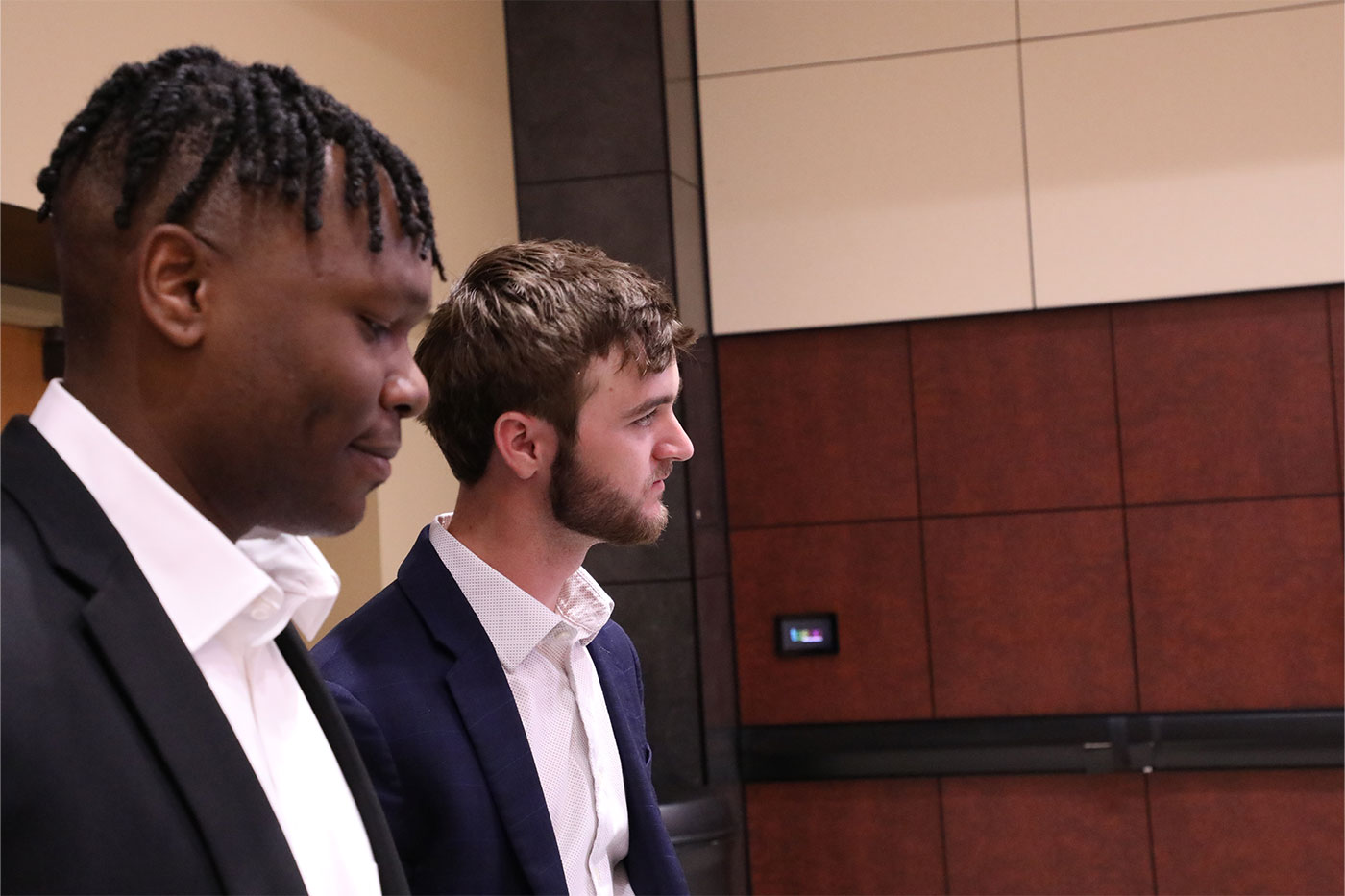
The project required working with graduate students in the lab to understand and address their needs in the design phase. Meeting the needs of those students was a critical piece of the puzzle, but it wasn't the only piece.
Moving from the theoretical aspects of design into the actual production phase, managing a budget and producing a useful final product were all hurdles the thrust stand team had to conquer.
“We had a lot of challenges,” team member Ajibek Karatalov said. “Most of the challenges were logistical. For example, one of the main parts was shipped from Japan, and it never made it. I don't know why. So, these kinds of challenges were sort of boundaries, but I'm glad that we overcame them as a team.”
Luckily for the students, there are plenty of resources and mentors to lean on. Mechanical engineering's machine shop, for instance, provided the expertise the students needed to work through many of the technical issues along with the sage advice that comes from working with professionals.
“I think having the shop instructors, Roy Mullins and David Meyers , they kind of gave us a new perspective on the issues we were facing,” said Jeffery (Mitch) McHugh, another team member. “They had more of a rounded perspective because they've worked in the field. That really helped us and gave us a perspective of what people that we may be working with in the future will have to say.”
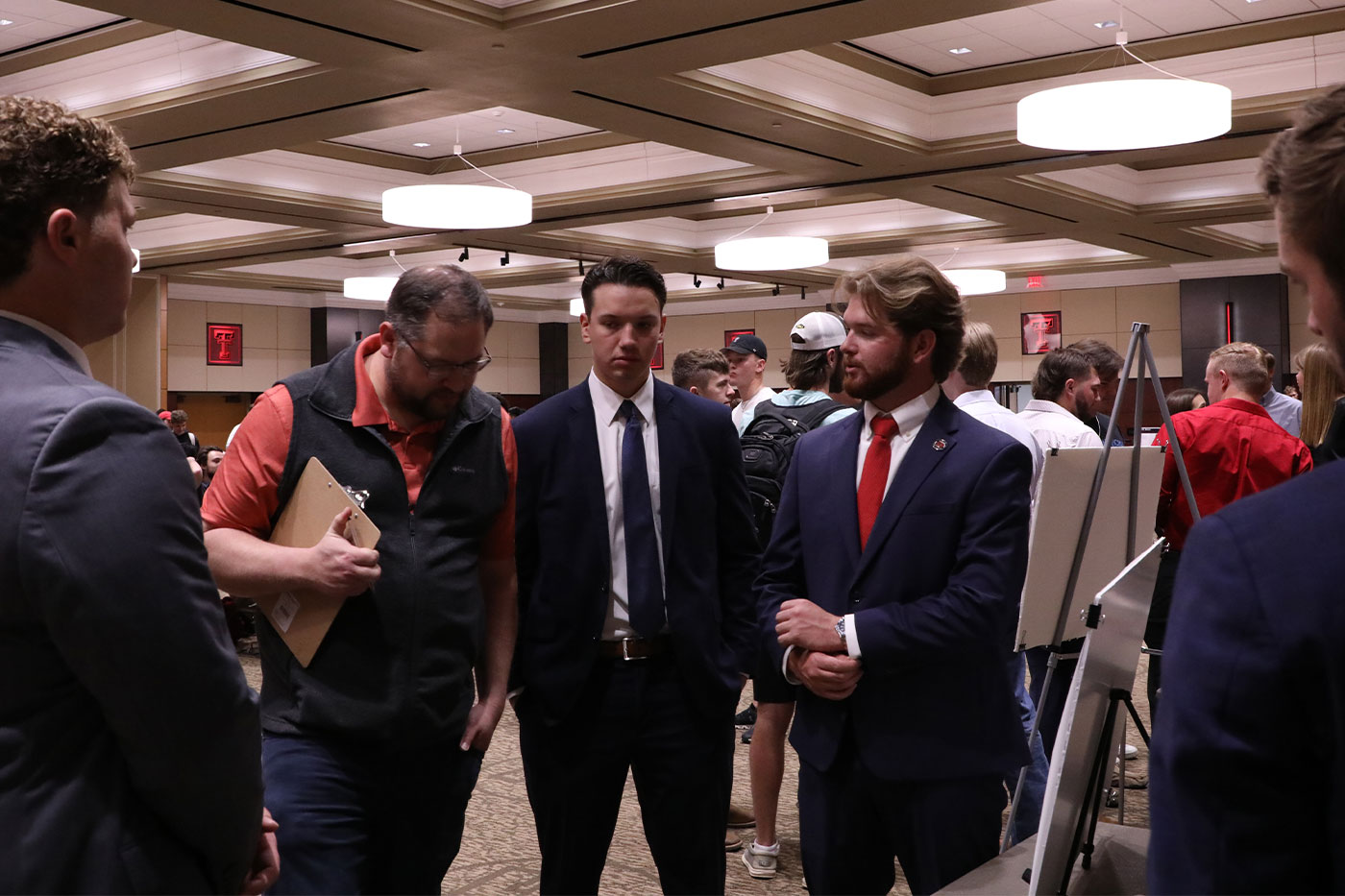
The team's design was on display at the Mechanical Engineering Expo, an event held on Texas Tech's campus where, along with other teams from the department, the work of the last year is shown off to the campus community.
Mullins and the staff at the machine shop work with a wide range of students daily, helping with things like welding and machining parts that wouldn't normally be done by engineers in the field, and he was impressed with the thrust stand team's competency.
“They've been a pretty self-sufficient group, actually,” Mullins said. “We've had to answer the usual technical questions and assist them in some machining, but for the most part, with the end design they've done really well on their own.
“It was a very specific subject. It was a research project tied to research we do in the department, so that was kind of unique in and of itself. But what really struck us about this project was it was for a research project that ties immediately to a critical problem.”
You may also like
Texas tech's psychology clinic has new home, bigger mission, texas tech professor receives $2 million grant for produced water research.
Six seniors recognized with Dean’s Awards for outstanding capstone projects
Topics include a method to detect earthquake victims and an image-to-text application for the visually impaired.
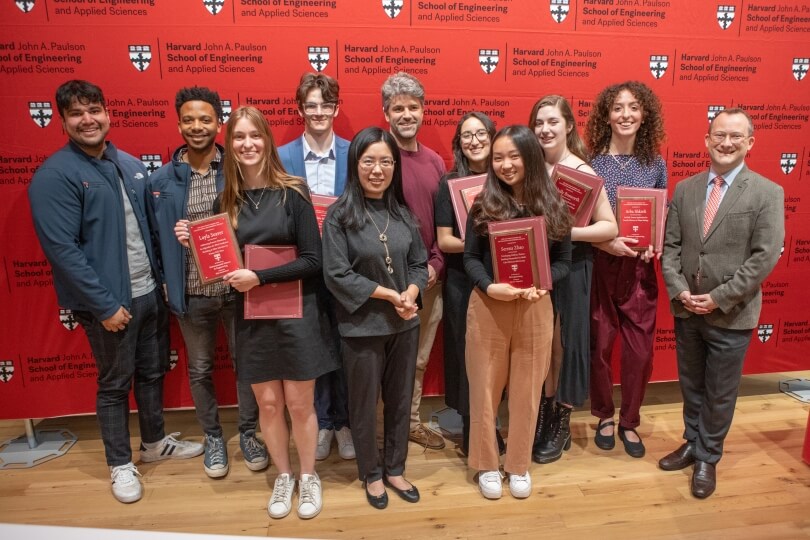
Six SEAS students have been recognized with Dean’s Award for Outstanding Engineering Projects (Eliza Grinnell/SEAS)
Six students from the Harvard John A. Paulson School of Engineering and Applied Sciences (SEAS) were recognized with the Dean’s Award for Outstanding Engineering Projects at the recent SEAS Design and Project Fair at the Science and Engineering Complex. Recipients participated in ES100, a year-long capstone course for seniors in the SB engineering program, where each student develops a project to address a real-world engineering problem. The award comes with a prize of $500.
“SEAS students make things that may be really cool, quirky, or fun,” said SEAS Dean David Parkes. “And just as often, their work will help solve a real-world problem and have a significant impact on people’s lives. During ES100, a year-long capstone course for seniors in the SB engineering program, students tackle specific problems. They develop technical specs, design solutions, test their ideas using quantitative analysis and simulations, prototype, and build.”
For the 2023-24 academic year, 42 students completed ES100 projects. Five projects, including one two-student team project, were selected for the award. The award-winning projects covered a broad range of topics, including a remote sensor network for detecting earthquake victims trapped under rubble, an image-to-text application for the visually impaired, a quadcopter drone with enhanced maneuverability, and tool for determining potential water contaminants and suggested filtration solutions in wells.
Serena Zhao’s bioengineering capstone, “Developing Uniform, Photon-Emitting Nanoprobes for Multi-Color Electron Microscopy,” designed nanoprobes that emit colored light when hit by protons from an electron microscope, allowing for much more detailed imaging at the nanoscale level.
“Electron microscopy (EM) images are black and white,” Zhao said. “There’s no specificity, no color labeling. When it comes to studying complex biological processes, that’s a huge disadvantage. My project was trying to build these nanoprobes that emit color under EM, so we can get an electron image, a colored probe image, and then we can overlay them into a colored, labeled image that still has specificity and high resolution.”
The other four award winners were:
- Arba Shkreli and Molly Bosworth , electrical engineering, for their project, “SeASAR: Sensor Application for Search & Rescue in Urban Settings”
- Yasmine Omri, electrical engineering, for her project, “Towards a Real-Time Image-to-Speech Tool for the Visually Impaired: Efficient Hardware for On-device Image Classification”
- Lachlan McGranahan , mechanical engineering, for his project, “Modeling, Simulation, and Control for a Tilt-Rotor Quadcopter”
- Layla Seaver, environmental science and engineering, for her project, “Addressing Forever Chemicals: An Algorithm for PFAS Prediction Modeling and Filter Selection for Private Well-Users”
“I’m interested in using my engineering background to serve actual human needs,” Omri said. “My project falls into a field that we call ‘tiny machine learning.’ I wanted to find a way to run a very complex system locally, with energy efficiency and performance speed. I tried to consolidate it into a practical, application-based system focused specifically on the visually impaired.”
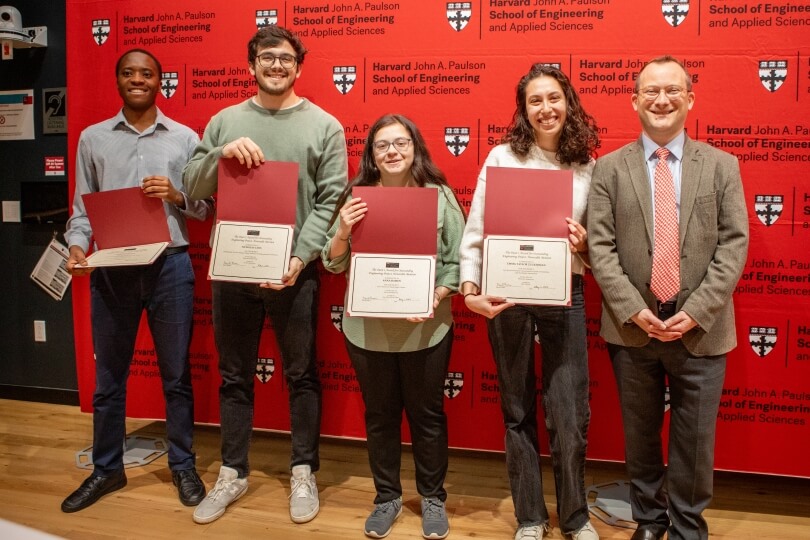
Four SEAS students received Honorable Mention for their senior capstone projects (Eliza Grinnell/SEAS)
Four additional SEAS students received Honorable Mentions for their capstone projects. They are:
- Cherish Jongwe, bioengineering, for his project, “Biofilm-Enhanced Household Water Filtration System for Heavy Metals Removal”
- Nicholas Laws , mechanical engineering, for his project, “Visualization Tool for Chemical Kinetic Pathways in Plasma-Assisted Combustion”
- Anna Ramos, electrical engineering, for her project, “Eye Controls for Quadriplegic Gamers”
- Emma Zuckerman , mechanical engineering, for her project, “Low Reynolds Number Anemometer for Earth’s Stratosphere and the Martian Atmosphere”
Seaver also received a $500 award from the Society of American Military Engineers. A former project lead and co-president of the Harvard chapter of Engineers Without Borders, Seaver has devoted most of her Harvard career to water research and infrastructure development.
“I took Elsie Sunderland’s class on toxicology, which introduced the idea of forever chemicals and contaminants like PFAS,” Seaver said. “When it came time to choose a thesis topic, I thought about the importance of these emerging contaminants for water quality and public health, and how I had the opportunity to work with one of the leading experts in this field through Elsie’s lab. If I could create a tool to make that information from the lab more readily available to users, that’d be the best way I could have an impact with my thesis.”
After she graduates, she’ll be working on water projects at the Boston office of Kleinfelder, an engineering firm.
“One of their most recent developments is looking at PFAS removal technology at the municipal level, which I’m really excited about,” she said.
Topics: Academics , Dean , Awards , Bioengineering , Electrical Engineering , Environmental Science & Engineering , Materials Science & Mechanical Engineering
Cutting-edge science delivered direct to your inbox.
Join the Harvard SEAS mailing list.
Press Contact
Matt Goisman | [email protected]
Related News
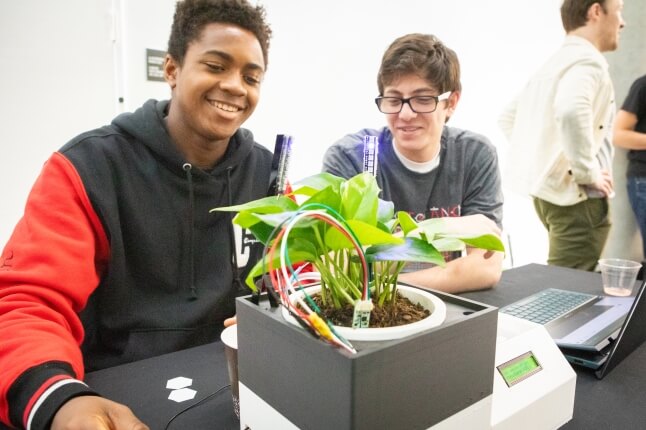
An engineer for every interest
Design Fair highlights range of engineering projects at SEAS
Academics , Active Learning Labs , REEF Makerspace , Allston Campus , Bioengineering , Design , Electrical Engineering , Environmental Science & Engineering , Materials Science & Mechanical Engineering , Robotics , Student Organizations
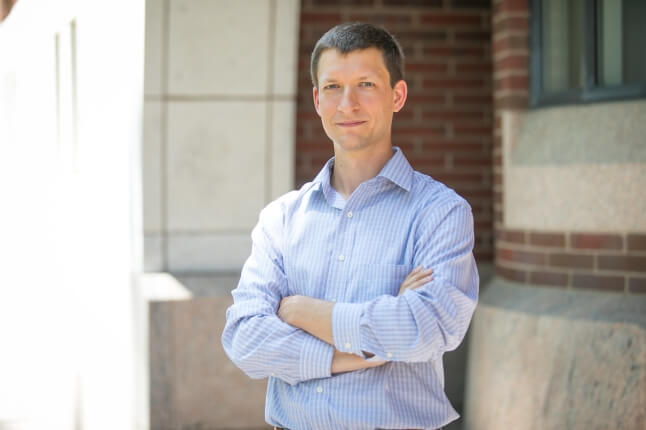
Kozinsky receives McDonald Mentoring Award
Materials scientist honored for thoughtful, effective advising
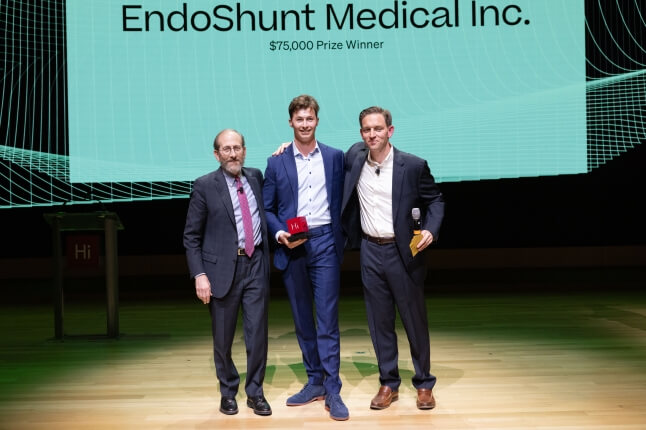
Three SEAS ventures take top prizes at President’s Innovation Challenge
Start-ups in emergency medicine, older adult care and quantum sensing all take home $75,000
Applied Physics , Awards , Computer Science , Entrepreneurship , Health / Medicine , Industry , Master of Design Engineering , Materials Science & Mechanical Engineering , MS/MBA , Quantum Engineering
Mechanical Engineering Technology
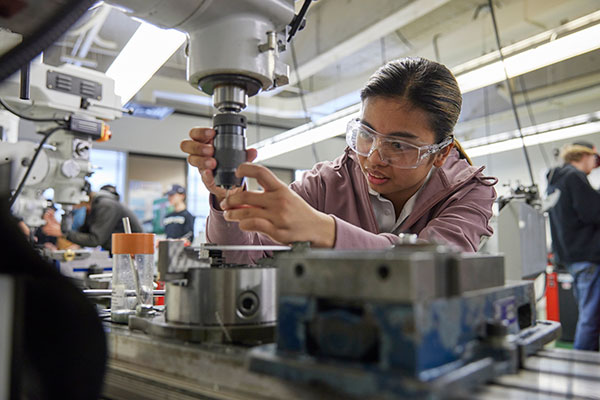
Credit credentials
A credit credential includes courses with post-secondary credit applied.
These credits will be used towards your specific program and may be accepted towards a credential at SAIT or a different post-secondary institution.
The credit credentials include a bachelor's degree, applied degree, diploma, certificate and post-diploma certificate.
Bachelor Degree
SAIT has bachelor's degree programs in business, construction, and hospitality and tourism management.
Bachelor's degrees are generally four-year programs, but you have up to 10 academic years to complete your courses.
Applied Degree
SAIT's full-time applied degree programs involve one year of study through classes and lab work followed by one year of directed studies in a workplace setting. This builds on the completion of a recognized two-year diploma, which you must have to be admitted to an applied degree program.
You then have seven academic years to finish your applied degree, starting from the day you begin the first course in that program.
At SAIT, over 40 full-time diploma programs cover a broad range of areas, from aircraft maintenance to travel and tourism.
Most diploma programs are completed in two years, though you can take up to seven academic years to complete the requirements.
Certificate
SAIT has several certificate programs in the sciences, health and trades.
These programs provide the essential skills to start a career but are shorter in length than SAIT's diploma programs - usually a year or less. However, you have up to five years to complete your program.
Post-Diploma Certificate
These programs build on skills developed through a diploma or degree program and combine classroom instruction with a workplace practicum.
They are often completed in a year or less.
Journeyperson
A certified journeyperson is recognized as a qualified and skilled person in a trade and is entitled to the wages and benefits associated with that trade. You must complete all apprenticeship periods and pass the exams to earn a journeyperson designation.
Non-credit credentials
A non-credit credential comprises courses and programs designed for professional or personal development.
Because these do not have post-secondary credits attached, they cannot be used towards any of the credentials above. We also cannot guarantee an external institute will accept these courses or credentials for transfer credit.
SAIT's non-credit certificates of achievement and completion are offered through Continuing Education and Professional Studies .
Certificate of Achievement
Certificates of achievement recognize the completion of a program that includes a formal evaluation of performance and a minimum of 144 (required and elective) course hours.
Certificates of achievement typically develop broader, complex skill sets. As of July 1, 2022, you have up to three years to complete the certificate. If you began these programs before July 1, 2022, you still have five calendar years to complete the program from when you began the first course.
Certificate of Completion
Certificates of completion recognize the completion of a program that includes a formal evaluation of performance and a minimum of 30 to a maximum of 143 course hours.
These certificates are shorter in duration than certificates of achievement and offer a focused education program. As of July 1, 2022, you have up to three years to complete the certificate. If you began before July 1, 2022, you will have five calendar years to complete the program from when you began the first course.
Professional Certificate
Program certificates recognize completion of a program that includes the formal evaluation of performance, and that is a minimum of one year in length.
These certificates have program-specific admission requirements.
Micro-credential
A micro-credential recognizes the completion of a non-credit course that includes a formal performance evaluation and verifies you have demonstrated specific competencies.
Micro-credentials focus on the mastery of specific skills. You receive a digital, shareable badge upon completing a SAIT micro-credential (SAITMicro).
Program length
Estimated program length if you study full-time (nine or more credits per semester.) Actual program length will vary based on the number of courses you are registered in and successfully complete per semester.
You must complete your credential within the timeframes listed below:
- Applied degree: up to seven academic years to complete all courses.
- Diploma: up to seven academic years to complete all courses.
- Certificates: up to five academic years to complete all courses.
The location (also known as delivery mode) is where your classes will take place. For programs with multiple locations, some delivery options may not be offered in every intake or semester.
You'll take all your classes in person on the specified campus.
You'll take all your classes online.
You'll take some classes in person at the specified campus and others online.
This program accepts international applicants and meets the eligibility criteria for the Post-Graduation Work Permit program as long as the student is enrolled in the on-campus delivery mode or completes more than 50% of the courses on campus (for the blended option).
International students attending all classes online will NOT be eligible for a Post-Graduate Work Permit. International students are responsible for maintaining their eligibility throughout their studies.
This program is available to international applicants , however, program availability may be limited. This program does not meet the eligibility criteria for the Post-Graduation Work Permit program.
This program only accepts international applicants if taken as part of a program bundle - two programs taken consecutively. Find available bundles that include this program under specialized intakes in the program overview.
If you complete both programs in the bundle, you will be eligible for a post-graduation work permit for up to three years.
Find available international program bundles and details .
This program does not accept international applicants at this time.
On this page:
Mechanical Engineering Technology is a rigorous, hands-on, two-year diploma program designed to equip you with the technical, analytical and problem-solving skills required for a variety of dynamic careers in mechanical engineering.
This program offers a foundation in the core principles of engineering, combined with practical application and design.
The first year serves as a comprehensive introduction to the field, covering essential subjects such as:
- fundamental mathematics and science for engineering applications
- computer-aided design (CAD) to bring designs to life using industry-standard software
- specialized courses that provide a deeper understanding of mechanical engineering principles.
After successfully completing your first year, you’ll choose from one of three specializations - Design and Analysis, Design and Development, or Design and Automation.
While we try to accommodate everyone’s specialization preference, selection is based on academic performance in relevant courses, particularly in cases where demand for a specific major exceeds available spots.
Design and Analysis
If you are interested in designing sophisticated mechanical systems, design and analysis is for you. You will:
- learn to create complex mechanical systems and components
- study the effects of vibrations on machinery and how to mitigate them
- explore energy systems and thermodynamics, the principles governing heat, work, temperature and energy
- understand the behaviour of fluids in motion and at rest and their interaction with solids.
Design and Automation
This is for those interested in automated processes in numerous industries. In design and automation, you will:
- delve into designing complex automated systems for manufacturing and other applications
- study programmable logic controllers, IEC61131-3 languages and their applications in automation
- understand the design and operation, and apply various robotics integrations for industrial and manufacturing settings.
Design and Development
This is for you if you want to make prototypes for products and systems. In design and development, you will:
- acquire skills in creating scale models for testing design concepts
- learn rapid prototyping techniques to bring ideas to tangible forms quickly
- focus on designing products and systems for optimal human use and comfort.
Regardless of your specialization, this program prepares you for immediate employment and provides a strong foundation for further studies.
Traits, skills and aptitudes
Those in the mechanical engineering technology field tend to be objective, innovative and methodical.
You need:
- the ability to perceive objects in 3D by looking at 2D drawings
- sketching or drawing skills
- an aptitude for math
- the ability to solve problems and think outside the box
- writing and speaking skills
- the ability to work as part of a team with minimal supervision.
You should enjoy:
- doing precise work
- obtaining and analyzing test results
- finding creative solutions to problems
- taking a methodical approach to your work
- liaising between company leadership, technical departments and the factory floor.
Practicum, co-op and work integrated learning
You’ll participate in a capstone project where you’ll work in teams to address a real-world challenge. In some cases, this project will include an industry partner.
Accreditations, designations and certifications
This program is nationally accredited by Technology Accreditation Canada (TAC).
Graduates may apply for their Certified Engineering Technologist (CET) designation after two years of appropriate work experience.
While attending SAIT, you can become members of the following societies:
- Association of Science and Engineering Technology Professionals (ASET)
- Society of Automotive Engineers (SAE)
- American Society for Quality (ASQ)
Credentials
After successfully completing this program, you’ll receive a SAIT Mechanical Engineering Technology diploma.
Careers and opportunities
Each year, SAIT conducts a survey between February and April to determine the employment rate, salary and satisfaction of our newest SAIT alumni.
Find out more about our graduate employment statistics >
Our graduates may work in the following occupations. Some careers require additional experience and education.
Associated National Occupational Classification (NOC) codes: 22301, 22302, 22212, 90010.

Career counselling and support
Unsure which career path is for you? SAIT offers career planning services to help you decide your future.
You can also get started by taking our online career finder quiz , which can help you narrow down your search based on your current skills and interests.
Finally, you can also head to Alberta alis for various tools and resources, including additional quizzes and labour market information to help you narrow down a career path.
The Mechanical Engineering Technology diploma requires 60 credits (24 courses) to complete.
The program spans two years, with two semesters each year.
View classes by semester
Suggested schedule of study
Year one - common, second year - design and analysis, second year - design and automation, second year - design and development, required courses, elective courses.
You will complete one of the following course groups depending on your specialization.
Progression
Students must attain a PGPA and/or a CGPA of 2.0 or better in each semester and pass the necessary prerequisite courses to progress through the program. To qualify for graduation, students must pass all courses, attain a CGPA of 2.0 or better and complete course requirements within the prescribed timelines.
Review our grading and progression procedure >

Explore your options!
Some courses in this program are available through Open Studies. You can complete courses via Open Studies to get a head start on your education, reduce your course load once accepted into a credentialed program, or determine which career path best suits you before you fully commit.
You may also take courses for general interest or personal and professional development.
- Admission requirements
Applicants educated in Canada
All applicants must demonstrate English language proficiency and meet the following requirements or equivalents.
- at least 60% in Math 30-1 or 75% in Math 30-2
- at least 60% in English Language Arts 30-1 or English Language Arts 30-2
- at least 60% in Physics 20 and Chemistry 20 or 60% in Science 30.
SAIT accepts high school course equivalents for admission for applicants educated outside Alberta.
Applicants educated outside of Canada
All applicants who were educated outside of Canada must demonstrate English Language proficiency and provide proof they meet the program admission requirements with an international document assessment. Find out what educational documents are accepted and assessment options .
SAIT may also accept courses completed at certain international post-secondary institutions .

Academic Upgrading
Missing an admission requirement for this program? Upgrade your prior education to help you receive admission into one of SAIT's career programs.
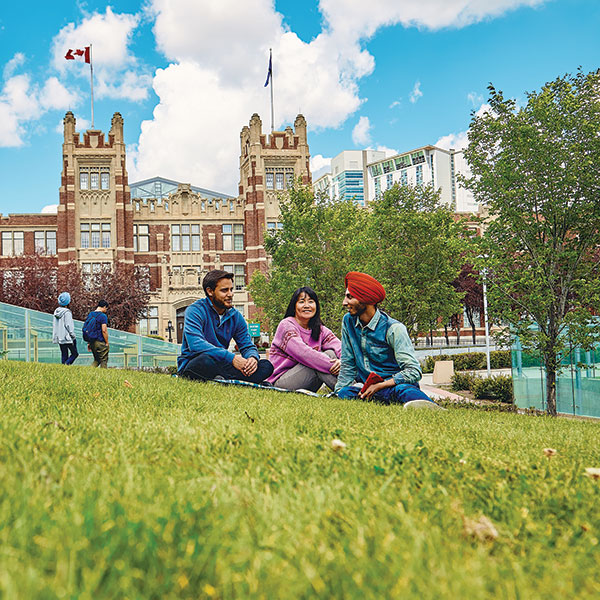
English language proficiency
All applicants must demonstrate English language proficiency prior to admission, including students educated in Canada.
Transfer agreements
At SAIT, we evaluate post-secondary credit you have previously earned and apply it to your SAIT credential. Explore our formal transfer agreements available for this program.
We can evaluate your prior education, even if we don't have a formal agreement in place.
Submit a transfer credit application
There are no formal transfer agreements currently in place for this program.
Transfer options for graduates
Build on the knowledge you’ve learned at SAIT. The opportunity to advance your education at an accredited post-secondary institution may be available.
🔗 Visit Transfer Alberta for a full list of transfer opportunities within the province.
Credits this program transfers to
Lakehead university.
Upon successful completion of this program, you may be eligible to apply for a post-diploma program, which may offer you - a qualified engineering technology graduate from an accredited Canadian technology program - the opportunity to obtain an engineering degree.
The post-diploma programs consist of two years of full-time study preceded by four transition courses taken during July and August.
For more information, please contact The Faculty of Engineering at Lakehead University.
Camosun College and University of British Columbia
Graduates of this program are eligible to apply for the Mechanical Engineering bridge program offered by Camosun College, provided all admission requirements are met.
Successful completion of this bridging program will qualify you to enter the third year of the Bachelor of Applied Science in Mechanical Engineering at the University of British Columbia at either the Vancouver or Okanagan campus. This degree is eligible for Professional Engineering (P.Eng.) designation.
Camosun College and University of Victoria
Successful completion of this bridging program will qualify you to enter the third year of the Bachelor of Engineering in Mechanical Engineering at the University of Victoria. This degree is eligible for Professional Engineering (P.Eng.) designation.
University of Wyoming
Upon successful completion of this program, you'll be eligible to apply for admission into the University of Wyoming's Bachelor of Science in Mechanical Engineering and receive up to 31 transfer credits toward the degree.
Available intakes
Start dates:
- Sep 03, 2024
- Application deadline: June 28, 2024
- Application deadline: May 29, 2024
Winter 2025
- Jan 06, 2025
- Application deadline: Oct. 25, 2024
- Application deadline: Sept. 30, 2024
2024/25 tuition and fees
The following estimated costs are effective as of July 1, 2024.
Domestic students
International students, books and supplies.
Books and supplies are approximately $1,500 per full-time year.
Find your booklist on the SAIT Bookstore's website. The booklist will be available closer to the program start date. Can’t find your program or course? The bookstore didn't receive a textbook list. Contact your program directly to determine if they’re still refining course details or if you're in luck; no textbook purchase is required this term.
This is a bring-your-own-device program with a custom hardware and software requirement.
The preferred hardware requirements for this program are as follows:
- Intel i7 (gen 7 or newer or AMD Ryzen 7)
- 16 GB RAM or greater
- 1 TB HD or greater
- Nvidia Quadro or AMD Radeon Pro video card
- Windows 10 PC (build 1906 or higher)
There is also required software, including SolidWorks.
During the program, you will use industry-standard software. Although the minimum specification will work, we recommend the best computer you can afford.
Required equipment/tools
The required tools will be provided.
Required personal protective equipment (PPE)
Safety glasses are required on the first day of class.
2023/24 tuition and fees
The following costs are effective as of July 1, 2023.
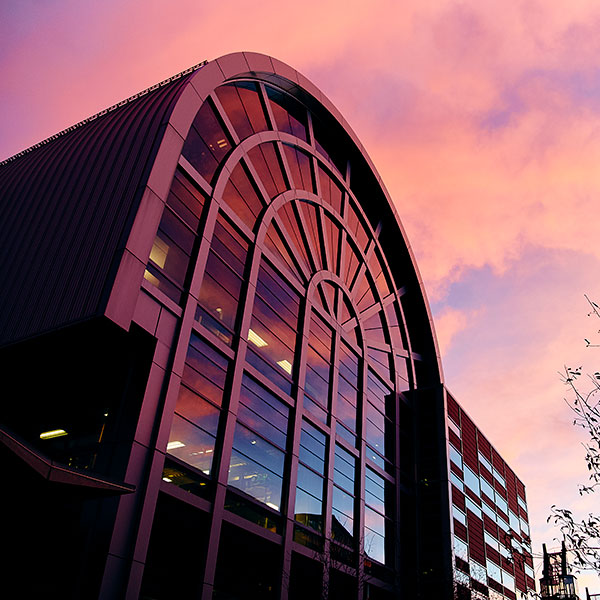
Financial aid
Paying for your education may feel overwhelming, but we have resources and programs that can help, including information about payment options, student loans, grants and scholarships.
Your fees are calculated based on the number of course credits you take per semester (approximately 16 weeks of study). In most cases, your fee is determined based on whether you're taking more or less than nine (9) course credits (more than nine credits in a semester are considered full-time studies.)
Fees are adjusted for programs with start dates outside the typical 15-week program.
2024/25 fees per semester
Fees are subject to change without notice.
Tuition fees
For a detailed breakdown of tuition costs per course, visit the domestic and international fee tables. Tuition, fees, books and supply costs are subject to change.
Application process
Ready to apply.
Follow our step-by-step guide to submitting a successful application.
Learn how to apply
Communication during admission
Email is the primary source of communication during the selection process. Ensure your personal email account is managed appropriately to receive our emails, files and communications. We recommend you add the [email protected] domain to your safe senders' list or you risk missing critical email messages.
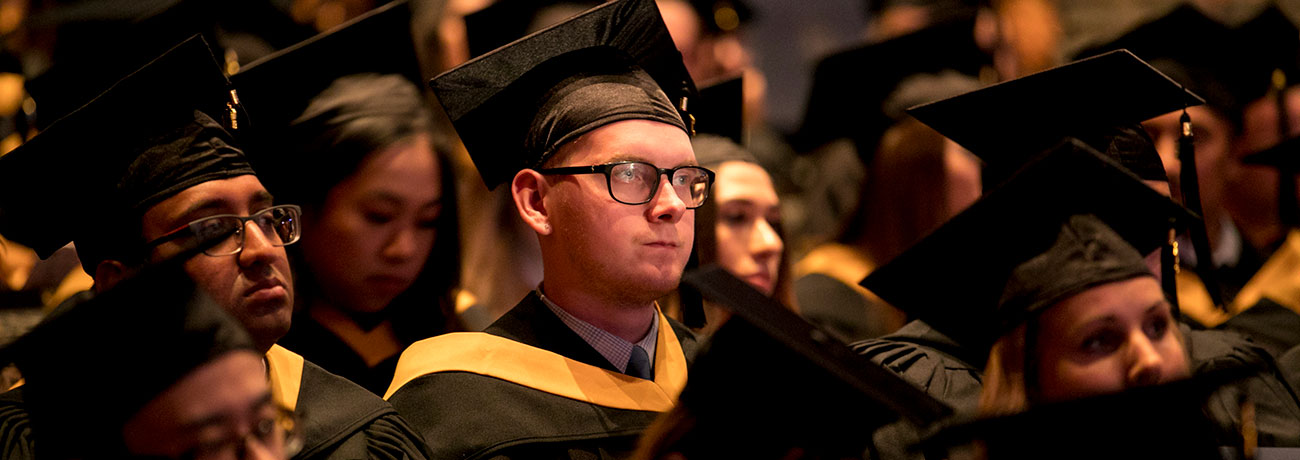
Begin your application
Apply now using the online application portal.
Ensure you have a valid Visa or Mastercard to pay the non-refundable application fee of $120 for domestic applicants or $150 for international applicants.
Information sessions
Prepare for a strong start in your chosen program or get the details you need to decide your future path.
Our expert staff and faculty are ready to answer your questions and provide information about the following:
- What sets SAIT apart
- An introduction to the program and area of study
- Future career paths
- Information on the earning potential and graduate employment rates.
School of Manufacturing and Automation Advising
International student advising, other programs you may be interested in, bachelor of science construction project management show details.
Construction management training that advances your skills in scheduling, budgeting and communication, preparing you to lead projects and manage sites with confidence.

Non-Destructive Testing Foundations Show details
Study how to identify possible mechanical and structural failures for oil and gas, transportation and utility companies through this program that covers the basics of the high-demand inspection industry.
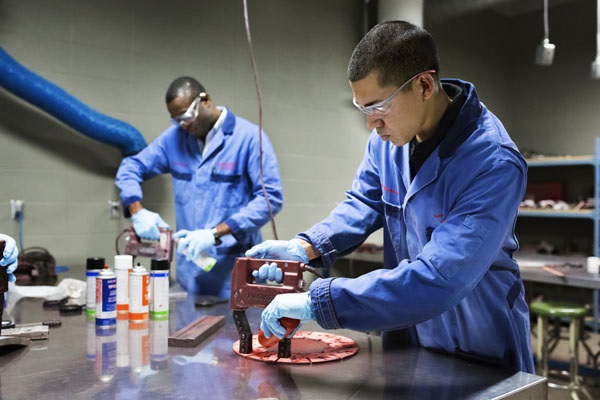
Architectural Technologies Show details
Build a career as an architectural technologist, construction coordinator or graphic designer with training in drafting, design and building systems.
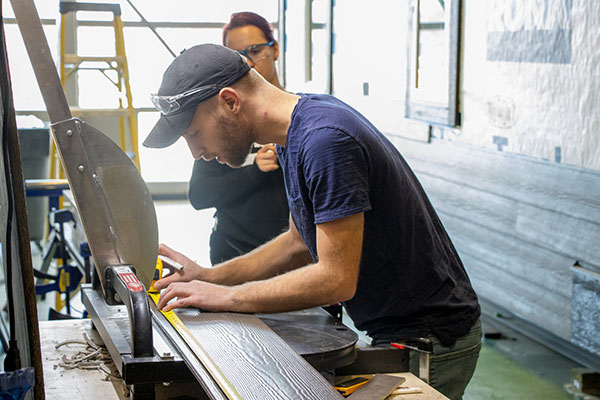
Civil Engineering Technology - Construction Management Major Show details
Study to manage the construction of buildings, roads, bridges and other infrastructure projects through hands-on civil engineering technology courses.
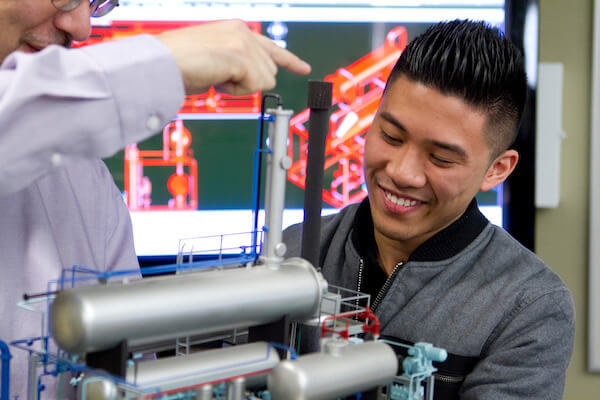
Subscribe for updates
Your journey starts here! Sign up to get important updates on:
- Construction, transportation and manufacturing programs
- Application information
- Relevant news and events

Oki, Âba wathtech, Danit'ada, Tawnshi, Hello.
SAIT is located on the traditional territories of the Niitsitapi (Blackfoot) and the people of Treaty 7 which includes the Siksika, the Piikani, the Kainai, the Tsuut’ina and the Îyârhe Nakoda of Bearspaw, Chiniki and Goodstoney.
We are situated in an area the Blackfoot tribes traditionally called Moh’kinsstis, where the Bow River meets the Elbow River. We now call it the city of Calgary, which is also home to the Métis Nation of Alberta, Region 3.

IMAGES
VIDEO
COMMENTS
Here's a list of 100 Mechanical Engineering Capstone Project Ideas categorized into different types: Renewable Energy. Automotive Engineering. Aerospace Engineering. NOTE: " 60+ Inspiring Capstone Project Ideas for STEM Students: Unlocking Excellence ". Manufacturing and Automation. Biomechanics and Medical Devices.
Emphasize mechanical design, safety, and ergonomics. 5. Heat Exchanger Optimization. Design and build an improved heat exchanger. Focus on improving efficiency for applications like HVAC systems ...
Here's a list of 151+ mechanical engineering capstone project ideas for students: Design and prototype a low-cost, portable water purification system. Develop a smart irrigation system using IoT sensors and actuators. Design a solar-powered refrigerator for off-grid communities.
Senior design projects (also known as "capstone" projects) are the centerpiece of the ME curriculum's professional component, allowing students to be involved in interesting, real-world activities. Each senior is required to complete this course. Capstone projects are each advised by a full-time tenured or tenure-track faculty member who works with the teams. For more detailed information ...
Capstone Projects. As a senior, you and your design team will design, engineer, and build a public service project selected by your class. You'll determine just what the client needs, you'll brainstorm designs, you'll create design drawings and fabrication plans, you'll engineer it to make sure it's safe, you'll build your project, then your client will try it out!
Here are the top 20 mechanical engineering project ideas: 1. Autonomous Vehicles. The rise of autonomous vehicles has revolutionized transportation. Designing and building a small-scale autonomous ...
All mechanical and materials engineering students are required to complete a capstone project in their senior year. Below you will find a list of past capstone projects from our engineering students. ... Below you will find a list of past capstone projects from our engineering students. 2023 Fall Semester Projects. Rapid Solidification Machine ...
Through the capstone design experience at USD's Shiley-Marcos School of Engineering, mechanical engineering students work within interdisciplinary teams on an open-ended senior design project to understand and execute the full cycle of the design process. We encourage you to explore all mechanical engineering capstone design projects below.
During the 2018 spring semester, two teams of five MechSE undergradudates created two new interactive astronomy-themed exhibits for the Orpheum Children's Science Museum in Champaign, Illinois. "Asteroid Mine" and "Orphy's Escape to Space" are first-of-their-kind projects for the Senior Capstone Design Program.
Capstone Projects. Past MME Capstone Design Projects can be viewed at the official Capstone Design website. To check out industry project proposal options for MME Fourth Year Design Projects, visit the Potential Capstone Design page.
2021 Capstone Projects. Scroll through the class of 2021's capstone projects below. Click on any of the projects to view the full research poster. ... Mechanical and Aerospace Engineering. 201 W. 19th Avenue; Columbus, OH 43210; Quick Links. Directory. News. Events. Courses. Connect. Facebook profile; Twitter profile; LinkedIn profile;
The Capstone projects reflect current, practical, and relevant industrial and mechanical engineering design projects or may involve a combination of both disciplines. Students bid for or develop their team's particular design project with the approval of appropriate faculty. In the project assignment process, design teams are self-formed, or ...
Senior Capstone Design "Nuts and Bolts". The Mechanical Engineering Senior Capstone Design Project Program is a two semester course sequence in which students will learn, synthesize and develop the skills of engineering practice with a lecture and studio/laboratory in each course. In the lecture portion, students learn the design process and ...
Last year's Expo showcased around half the number of projects, thus for 2024 the student teams branched out to a wider breadth of topics and research areas. Team 28, for instance, was sponsored by "a small town near the Colca Canyon in Peru," according to electrical engineering technology senior James Drury.
Organized Chaos: Keep your space tidy. A clutter-free workspace is like a calm sea—smooth sailing for your project ship. Confidence Showtime: When it's showtime, strut your stuff. Share your journey, the highs, the lows—it's your moment to shine like a rockstar. Executing your Capstone Project is a gig to remember.
The Senior Capstone Project has to be a non-commercialized unique idea. With support from the Mechanical Engineering faculty, students have a year to create, design, prototype and test their ideas. Intro to MEE Capstone by Dr. Alex Friess. 2019-2020 Senior Capstone Projects: Hybrid UAVs. Lighter-Than-Air Vehicles.
Click here to check out Team #11's Automated Watering System 2 project! Mechanical Engineering Technology. 5711 Boardman Hall Orono, Maine 04469-5711. Tel: 207.581.2340 Fax: 207.581.2113 [email protected].
Each team worked for two semesters to come up with the design and fabrication of the project. A list of the design projects for Spring 2023 is as follows. 1. Lane Detection System. 2. Campfire Steam Turbine. 3. EVTOL Transition Mechanism.
The end of term saw fourth-year Mechanical and Industrial Engineering students culminate their year-long Capstone Design projects at the annual MIE Capstone Design Showcase. A total of 80 teams, comprising over 330 students, presented their prototypes, posters, and final recommendations to faculty and industry clients at Hart House.
Health Monitoring wearable. For more information about good capstone projects for engineering you may go on the links below: Mechatronic capstone project. Raspberry-pi capstone project. Electronics capstone project. Mechanical capstone project. I hope you got some good capstone projects from this article.
MIT's Department of Mechanical Engineering (MechE) offers a world-class education that combines thorough analysis with hands-on discovery. One of the original six courses offered when MIT was founded in 1865, MechE's faculty and students conduct research that pushes boundaries and provides creative solutions for the world's problems.
An Ideal Capstone Design Project. The ideal capstone design project is a challenging design problem related to a real industrial application that is likely to be implemented. Projects do not need to be pure mechanical design - they can include analysis, process development etc. There is plenty of scope to include any project that provides a ...
Welcome to the digital component of the 2021 Engineering Showcase! Navigate via the links below to view the project posters and videos from student teams in the different engineering disciplines. This site is best viewed on a large screen. Explore. 2021 Capstone Projects. Capstone 2021 Biological Engineering. Capstone 2021 Biomedical Engineering.
Technology Service Desk; ... Mechanical Engineering; Capstone Projects; Posters of Previous Projects . The following are PDF files of posters of successful Senior Design Capstone Projects and Embedded Projects presented at the annual Projects Day held in May of each calendar year. AY 2019-20 (May 2020) IN PROGRESS ...
Electrical Engineering Capstone Project Ideas. Low-cost, open-source oscilloscope design. Propose a next-gen lithium-ion battery technology to address lifespan limitations. Propose innovative use of conductor-loaded ceramics. Design an IoT-based smart home system for optimal energy usage.
What started as a capstone project handed to a group of students in Texas Tech University's Edward E. Whitacre Jr. College of Engineering has yielded a useful tool for future research.. Given the opportunity to select a project, the undergraduate students in the Department of Mechanical Engineering leaned into helping current and future graduate students by creating a tool that could be used ...
Six students from the Harvard John A. Paulson School of Engineering and Applied Sciences (SEAS) were recognized with the Dean's Award for Outstanding Engineering Projects at the recent SEAS Design and Project Fair at the Science and Engineering Complex. Recipients participated in ES100, a year-long capstone course for seniors in the SB engineering program, where each student develops a ...
Overview. Mechanical Engineering Technology is a rigorous, hands-on, two-year diploma program designed to equip you with the technical, analytical and problem-solving skills required for a variety of dynamic careers in mechanical engineering. This program offers a foundation in the core principles of engineering, combined with practical ...